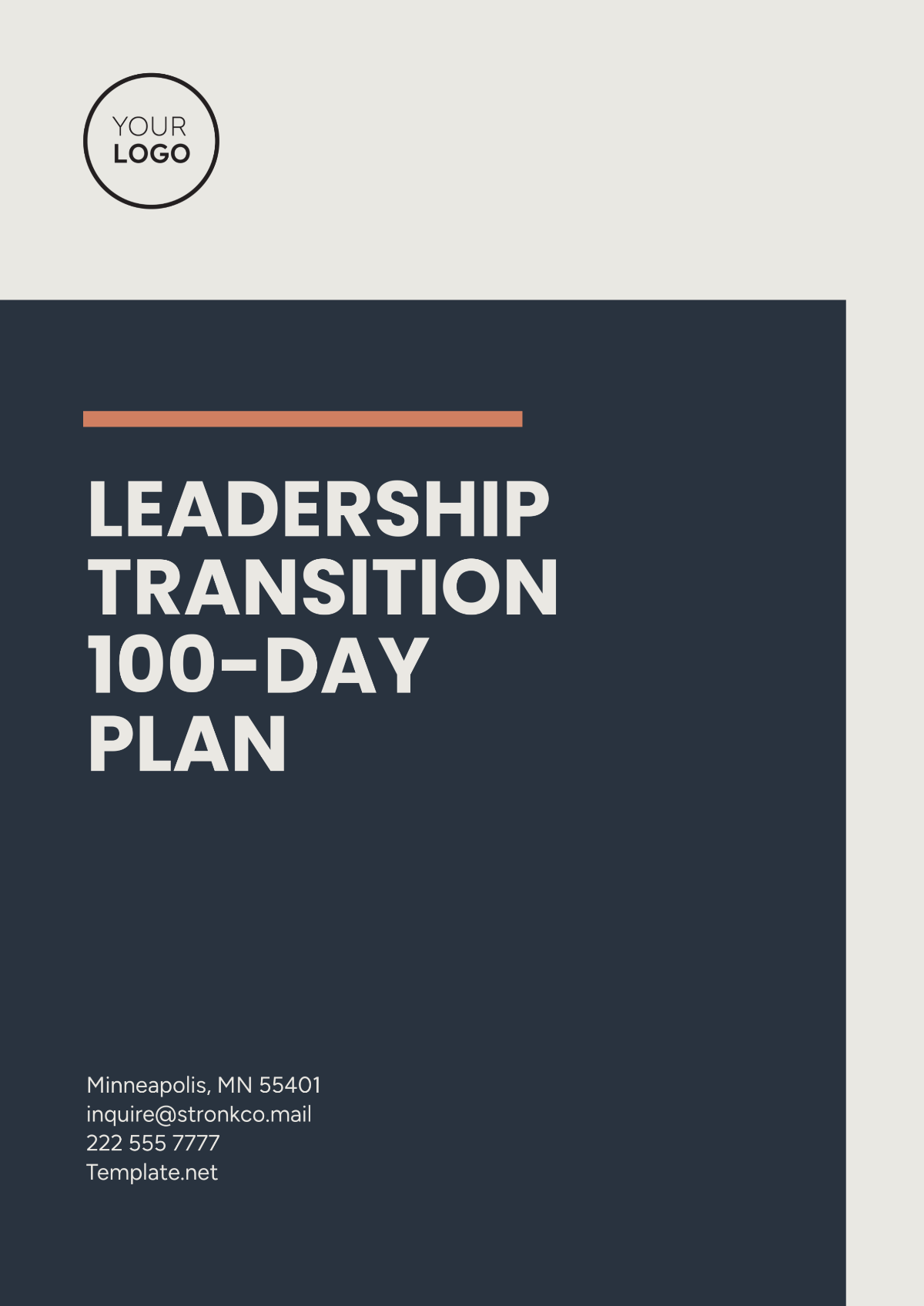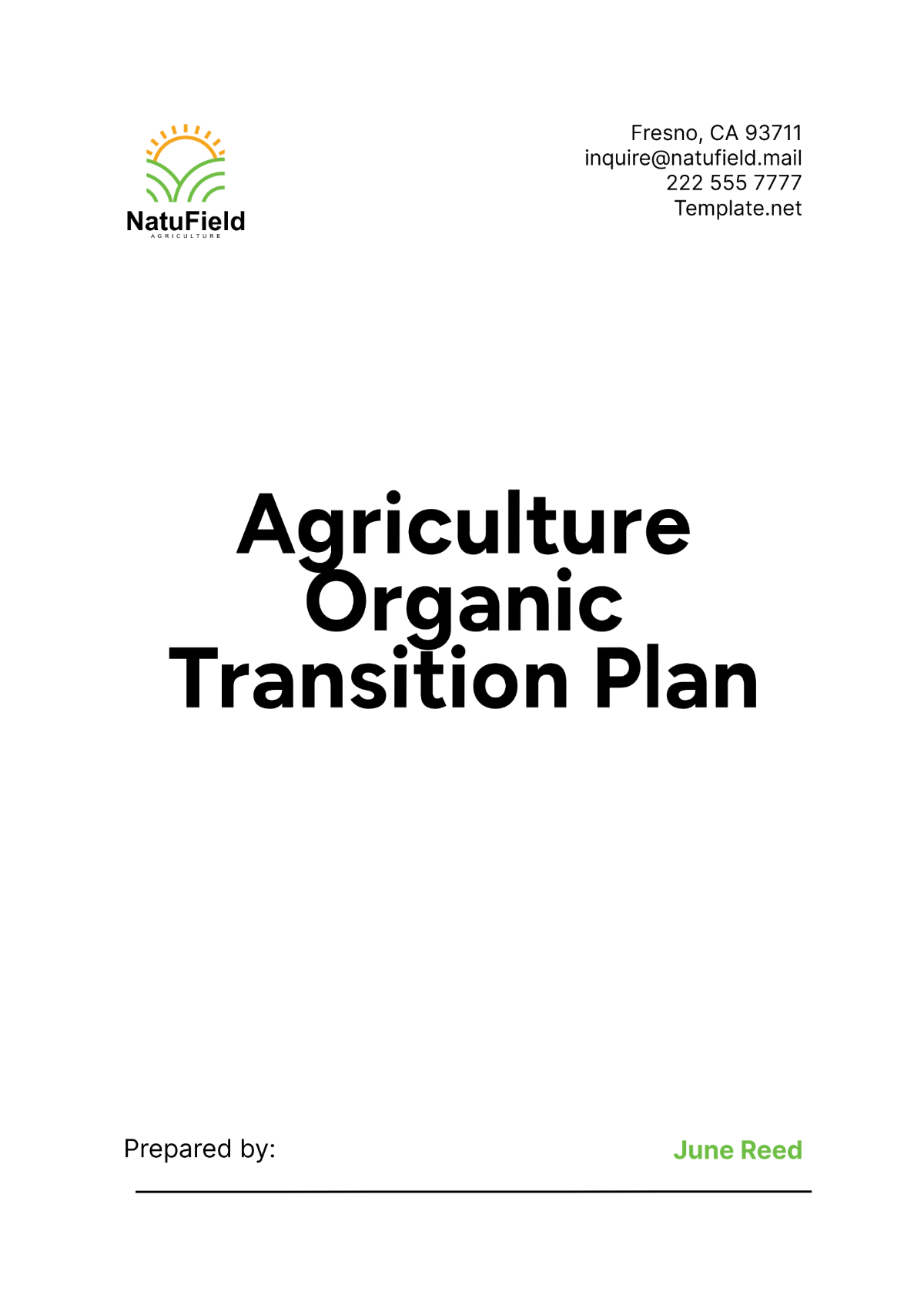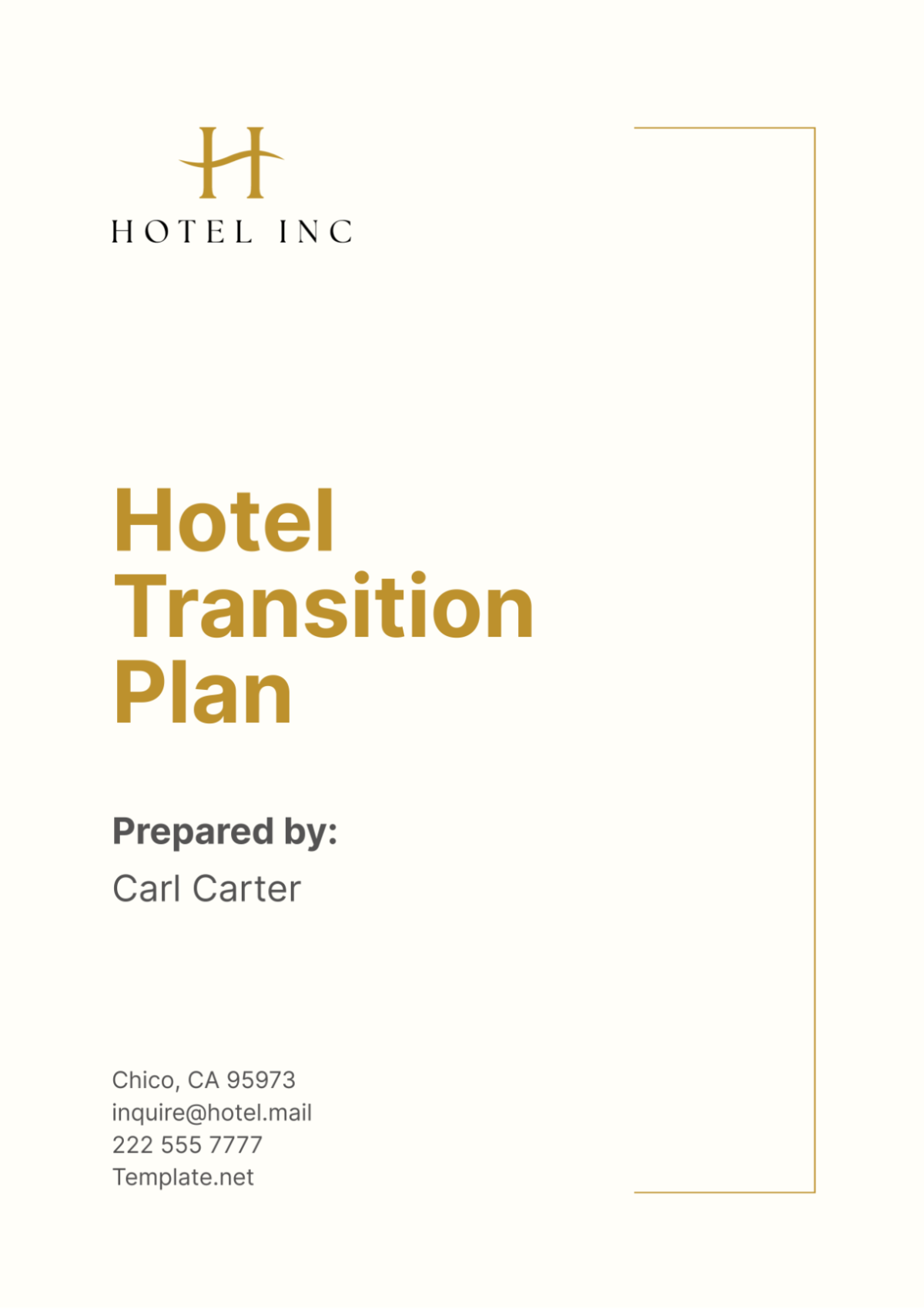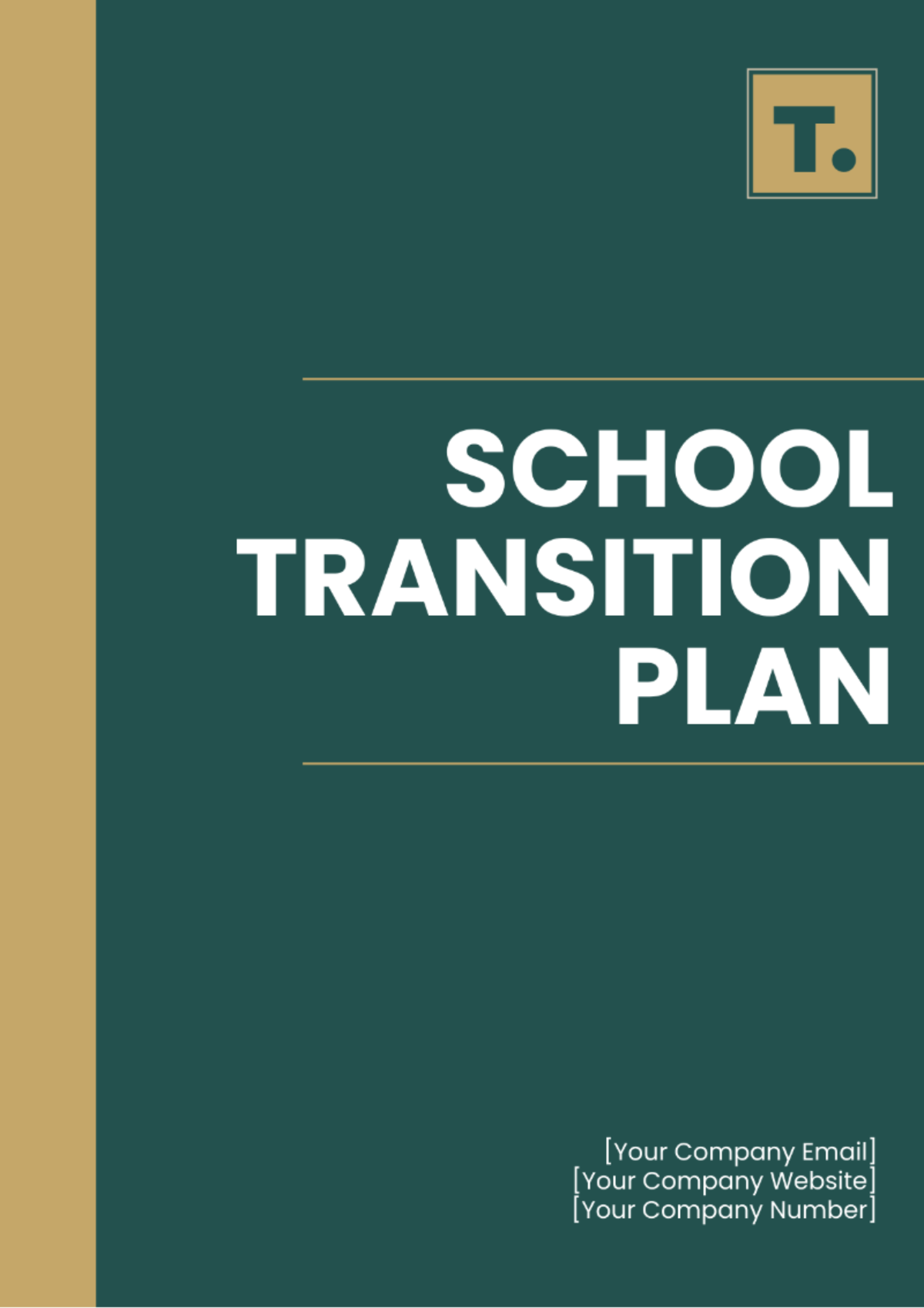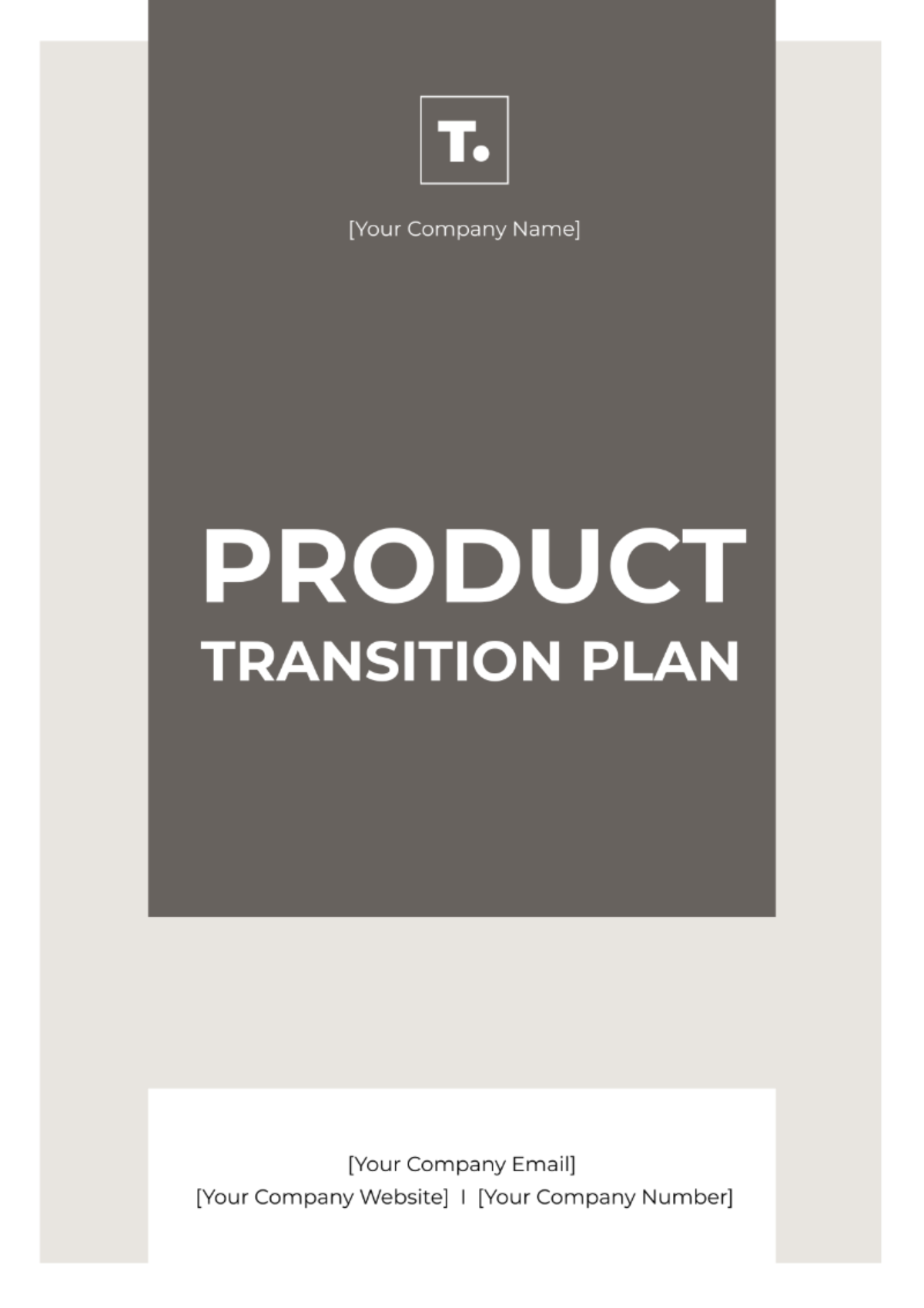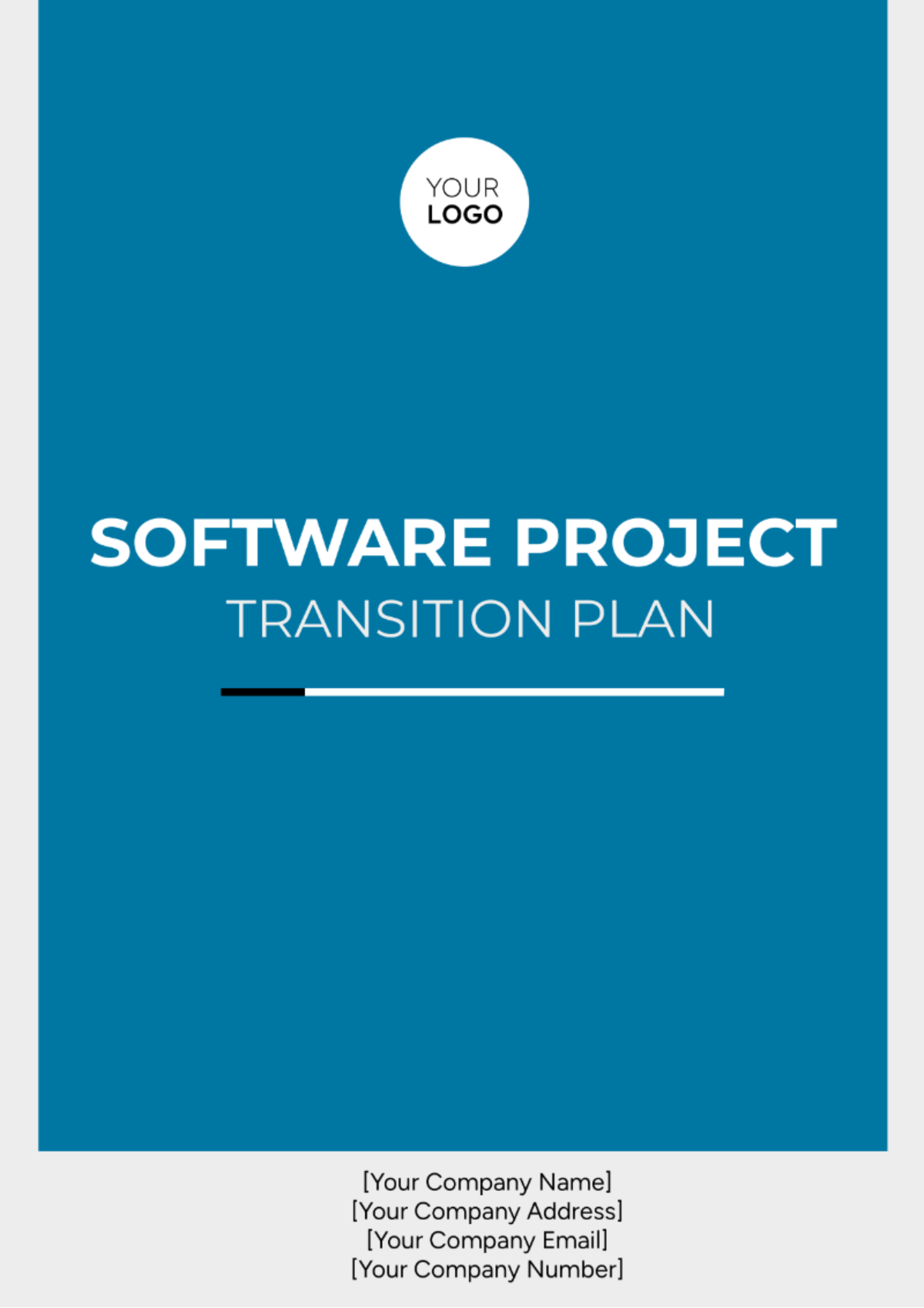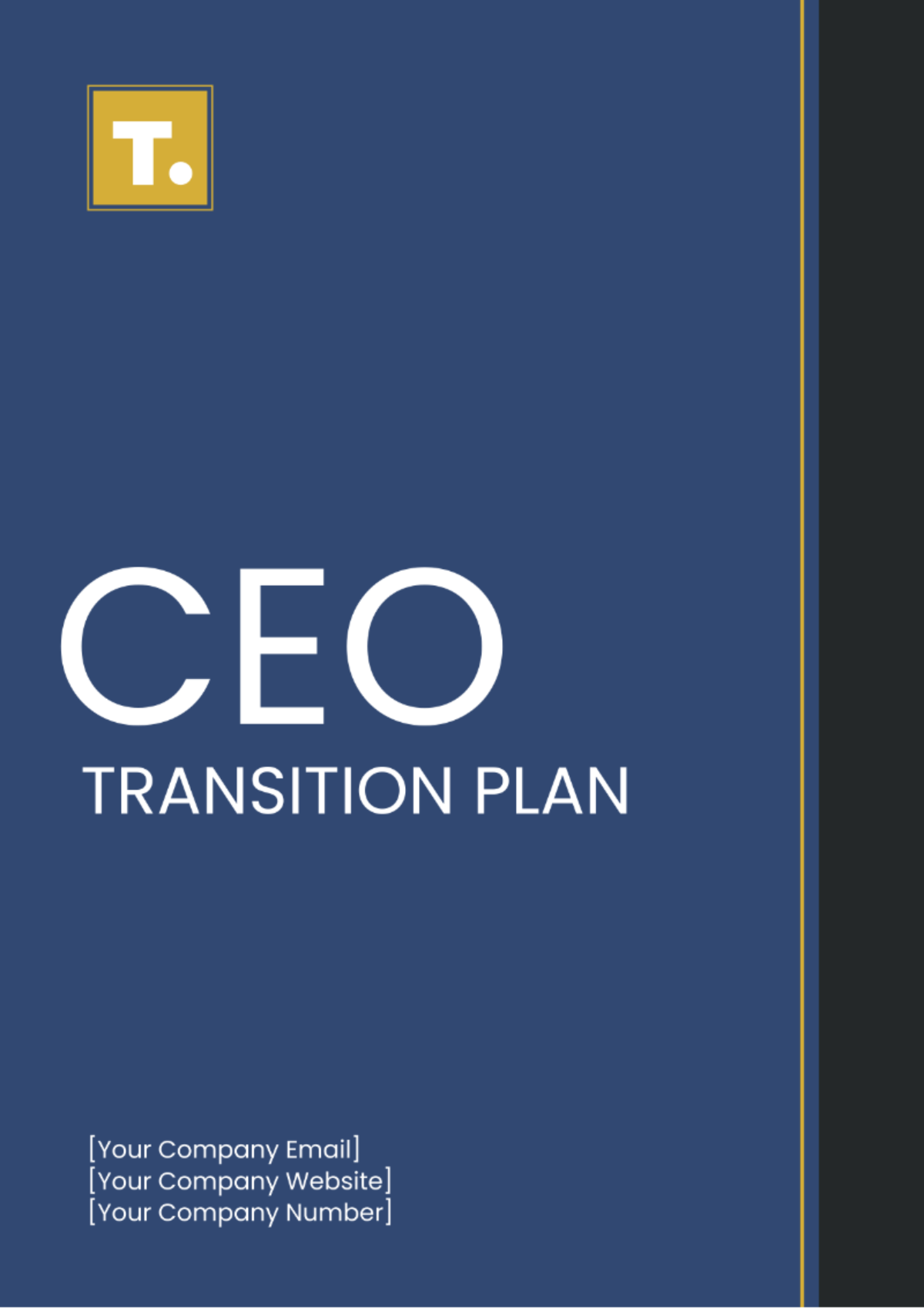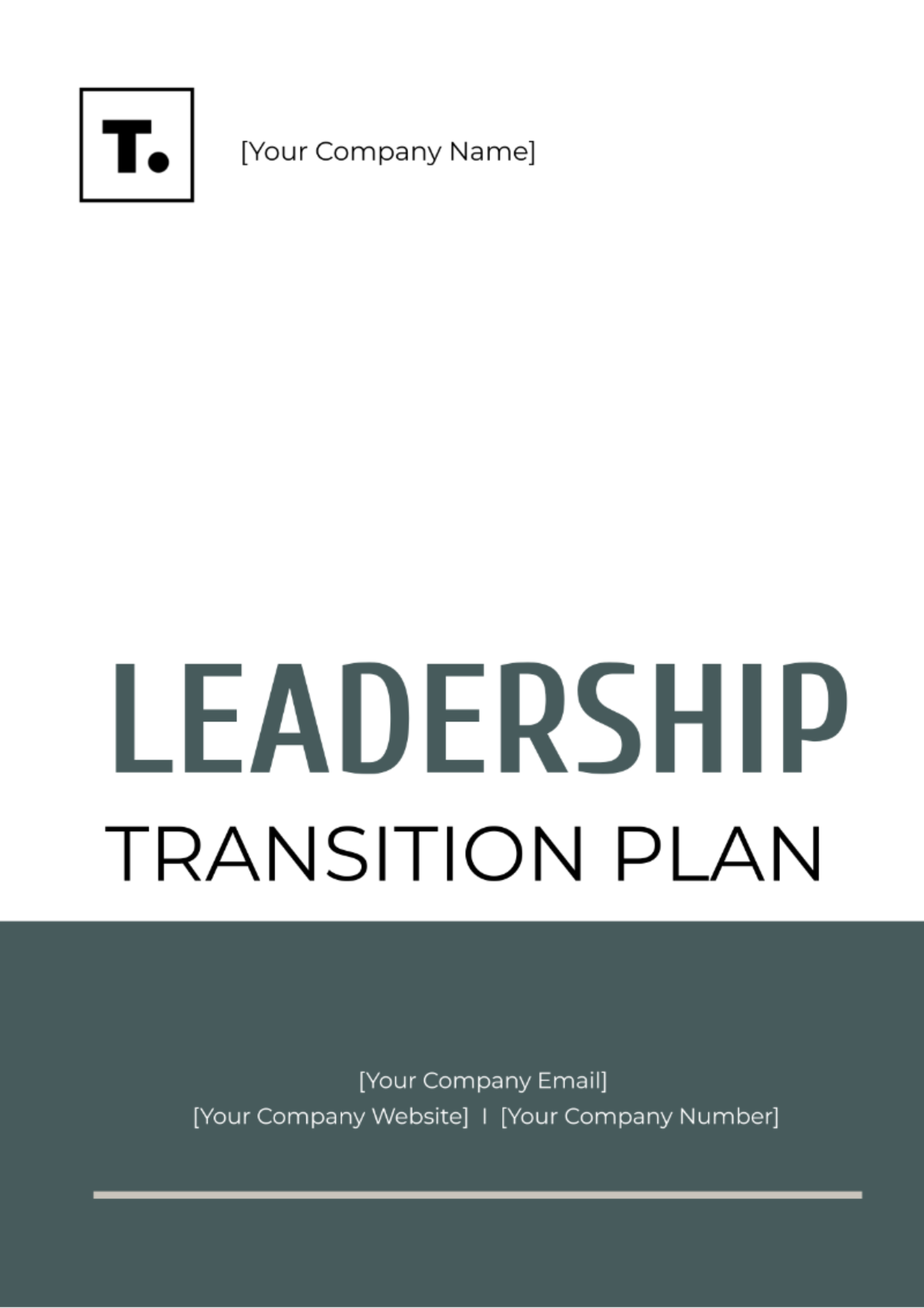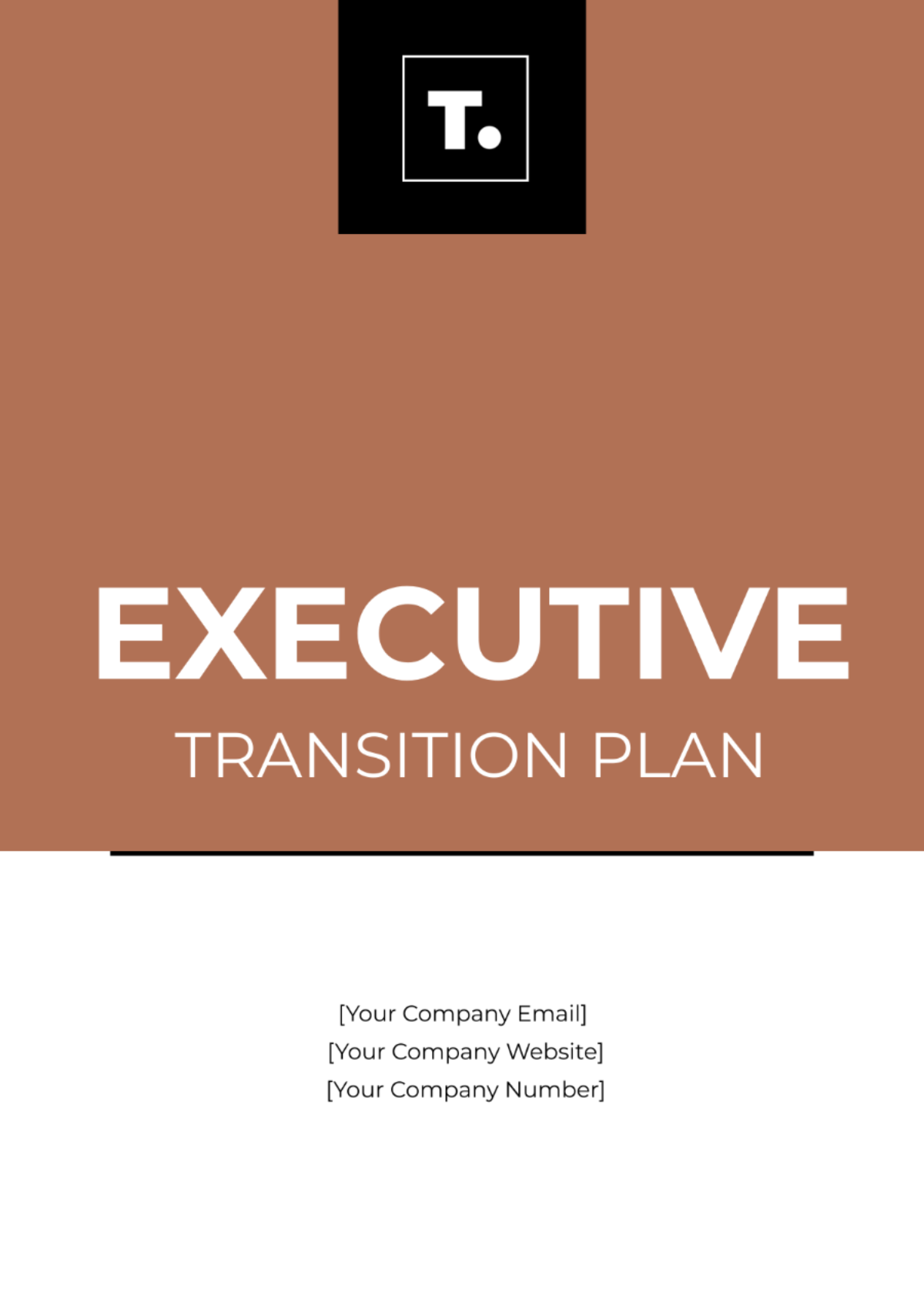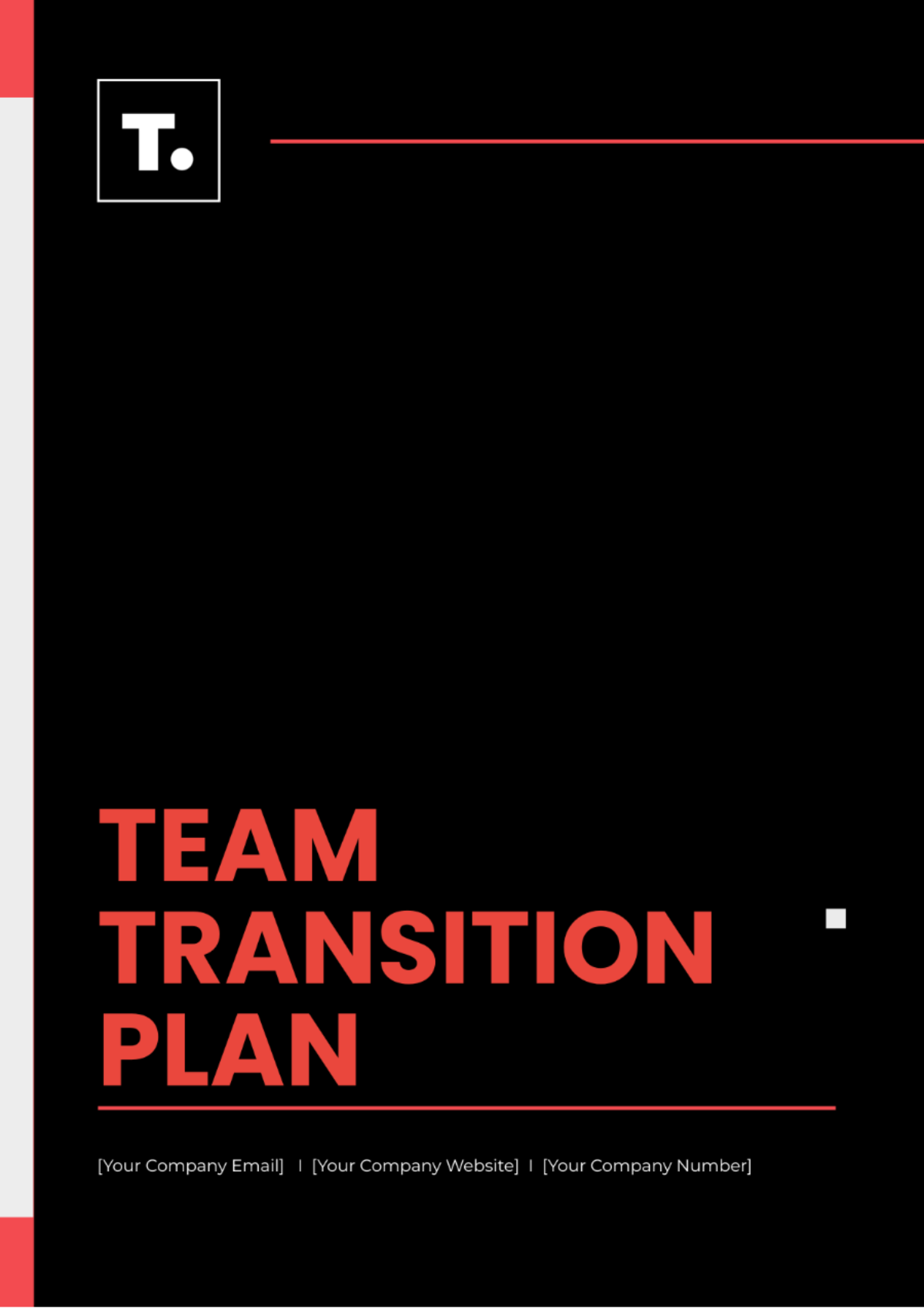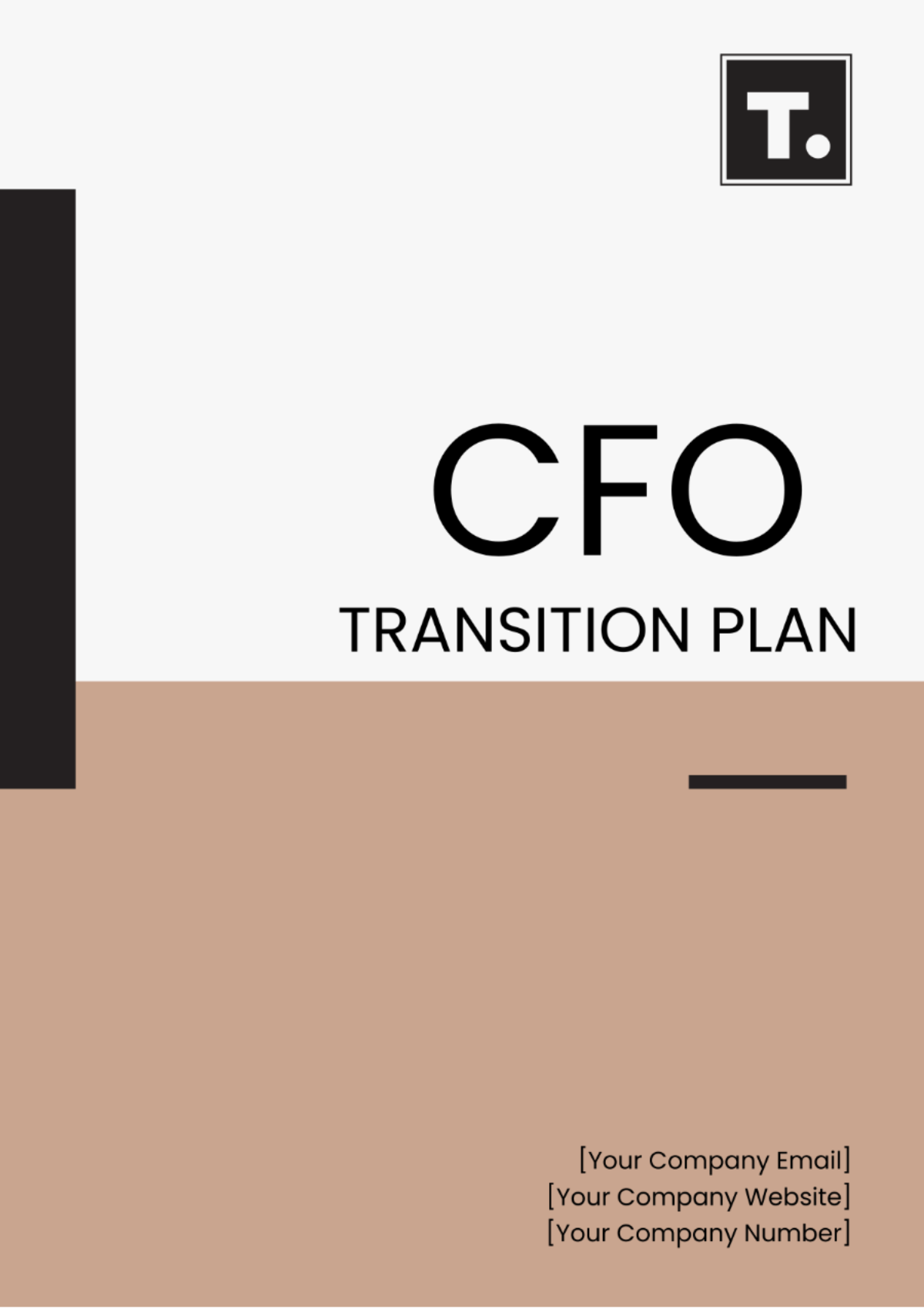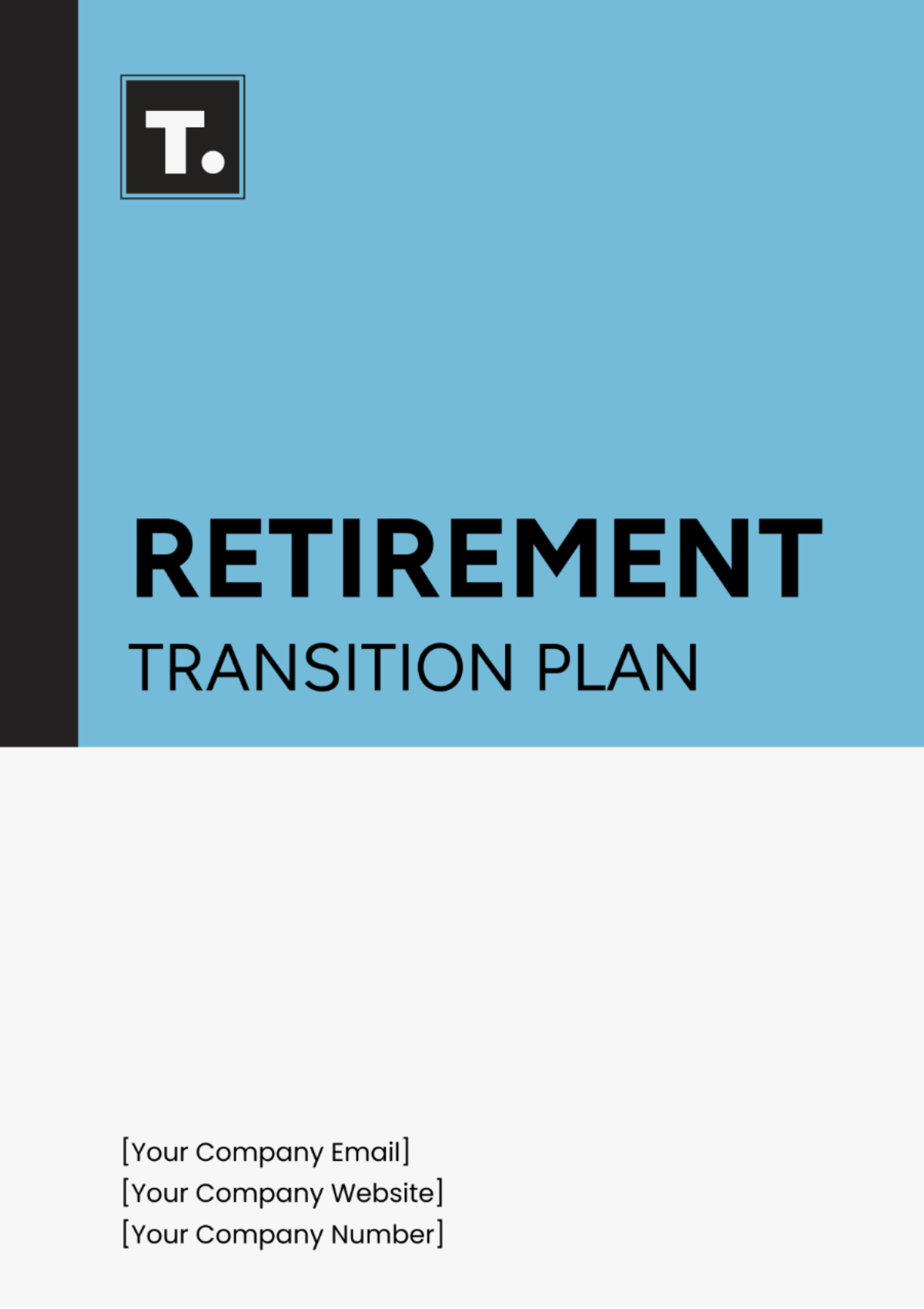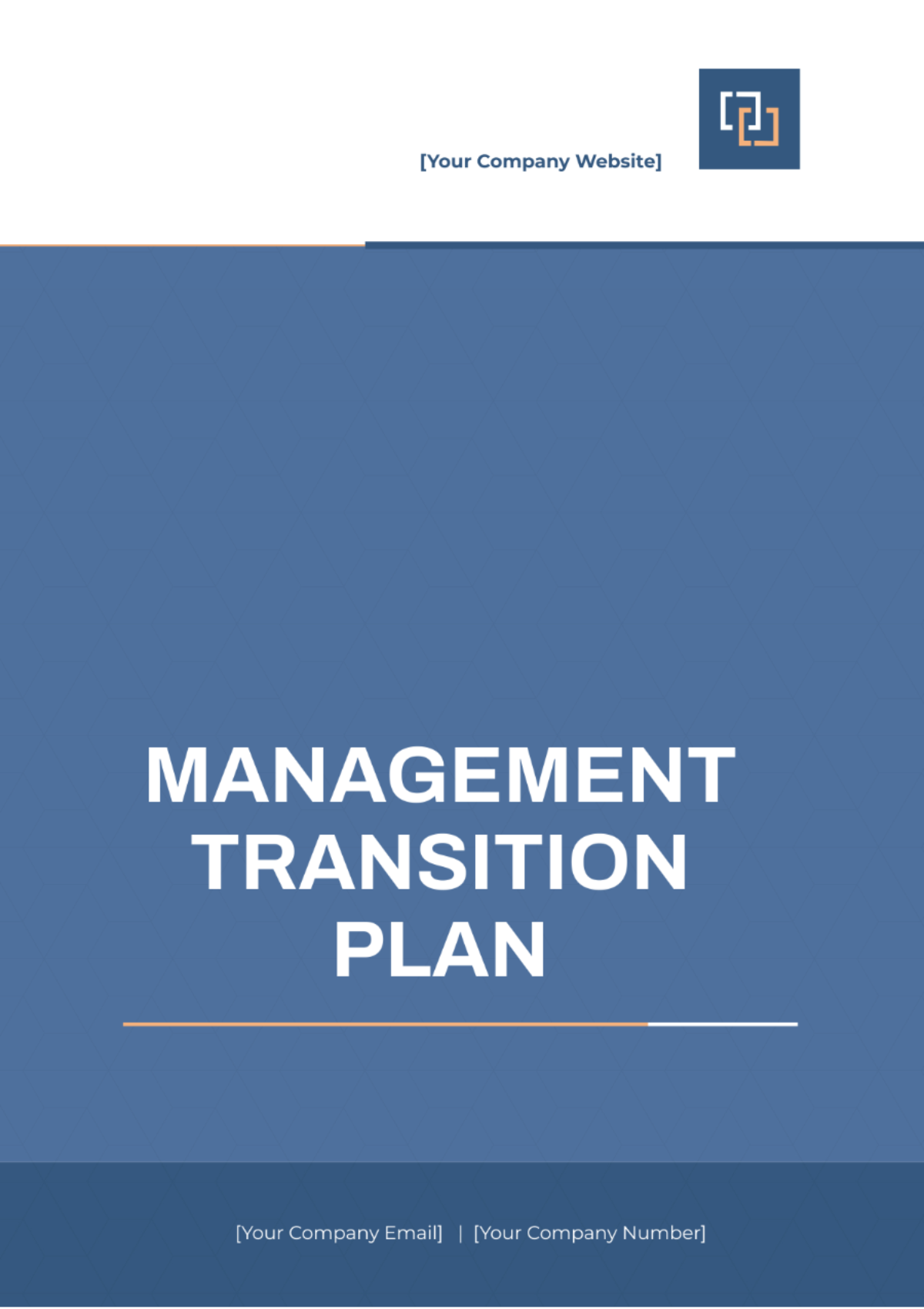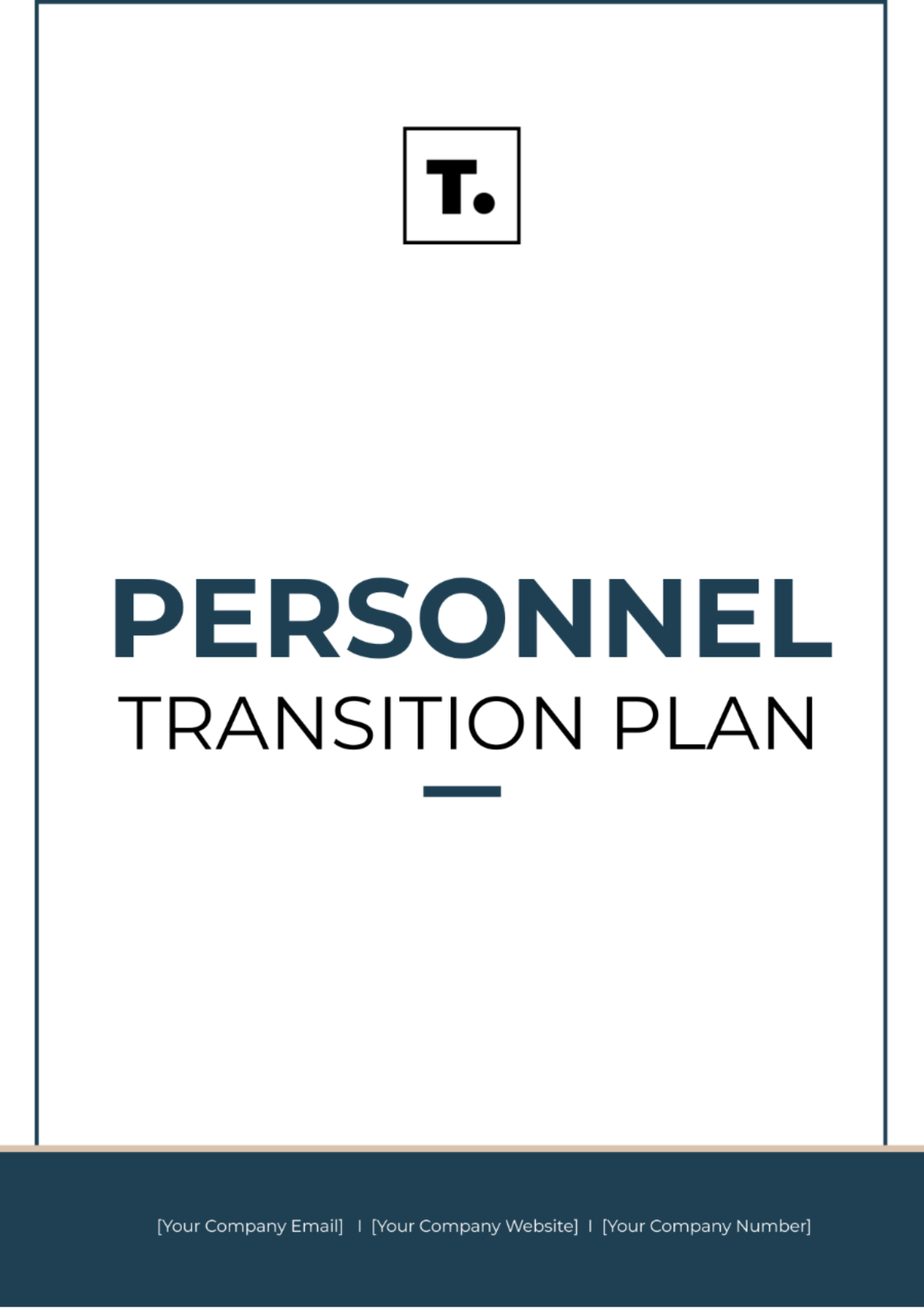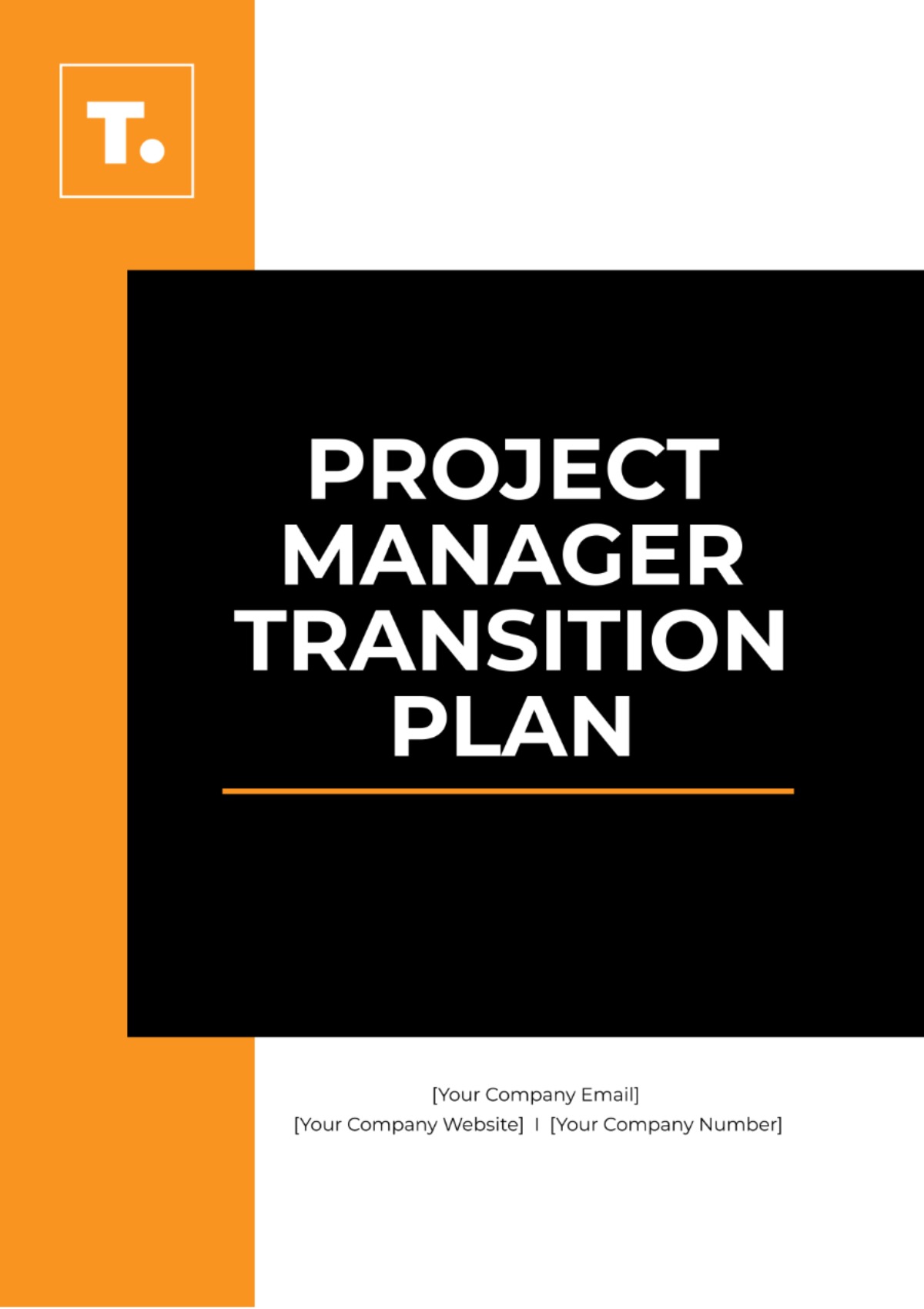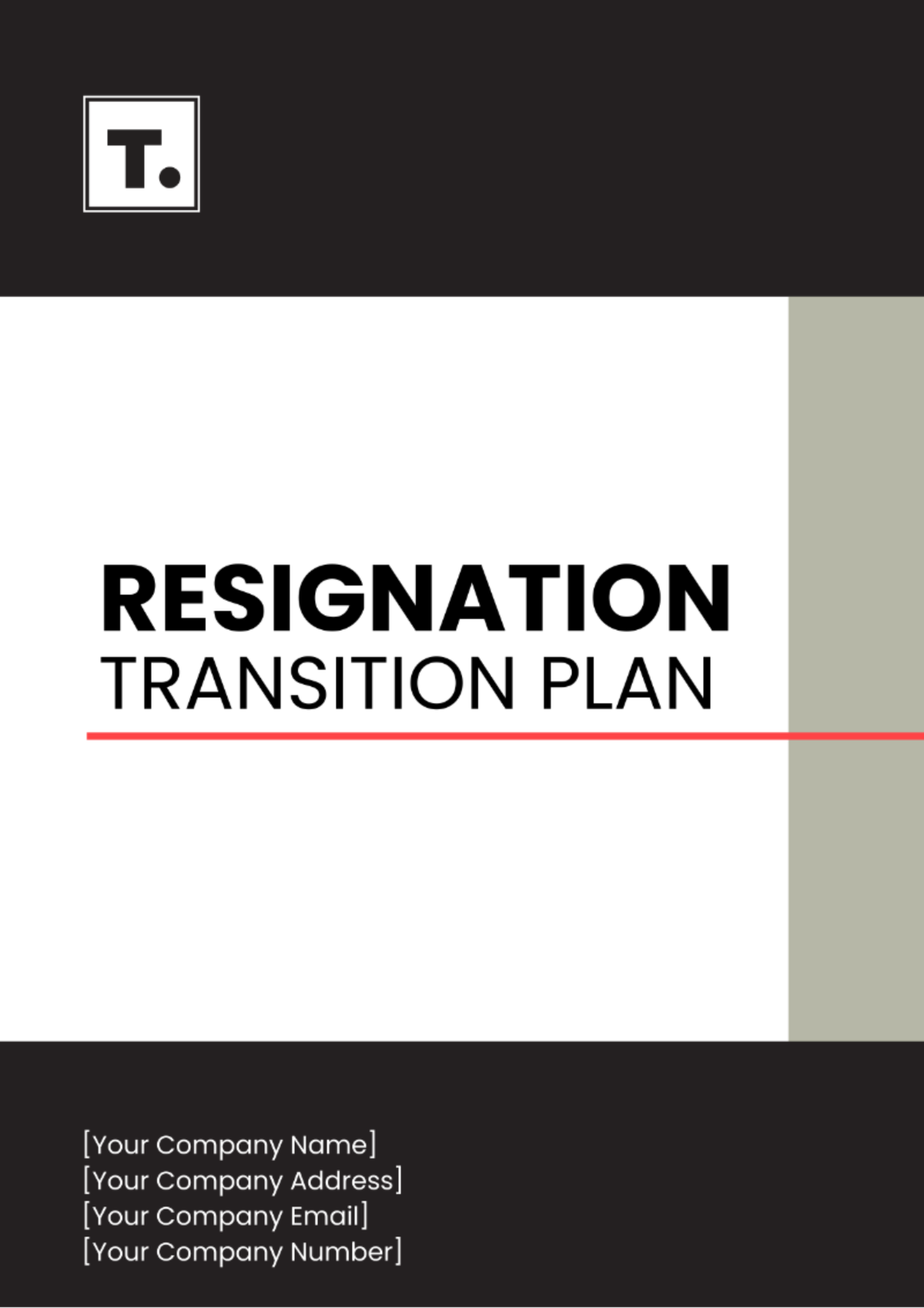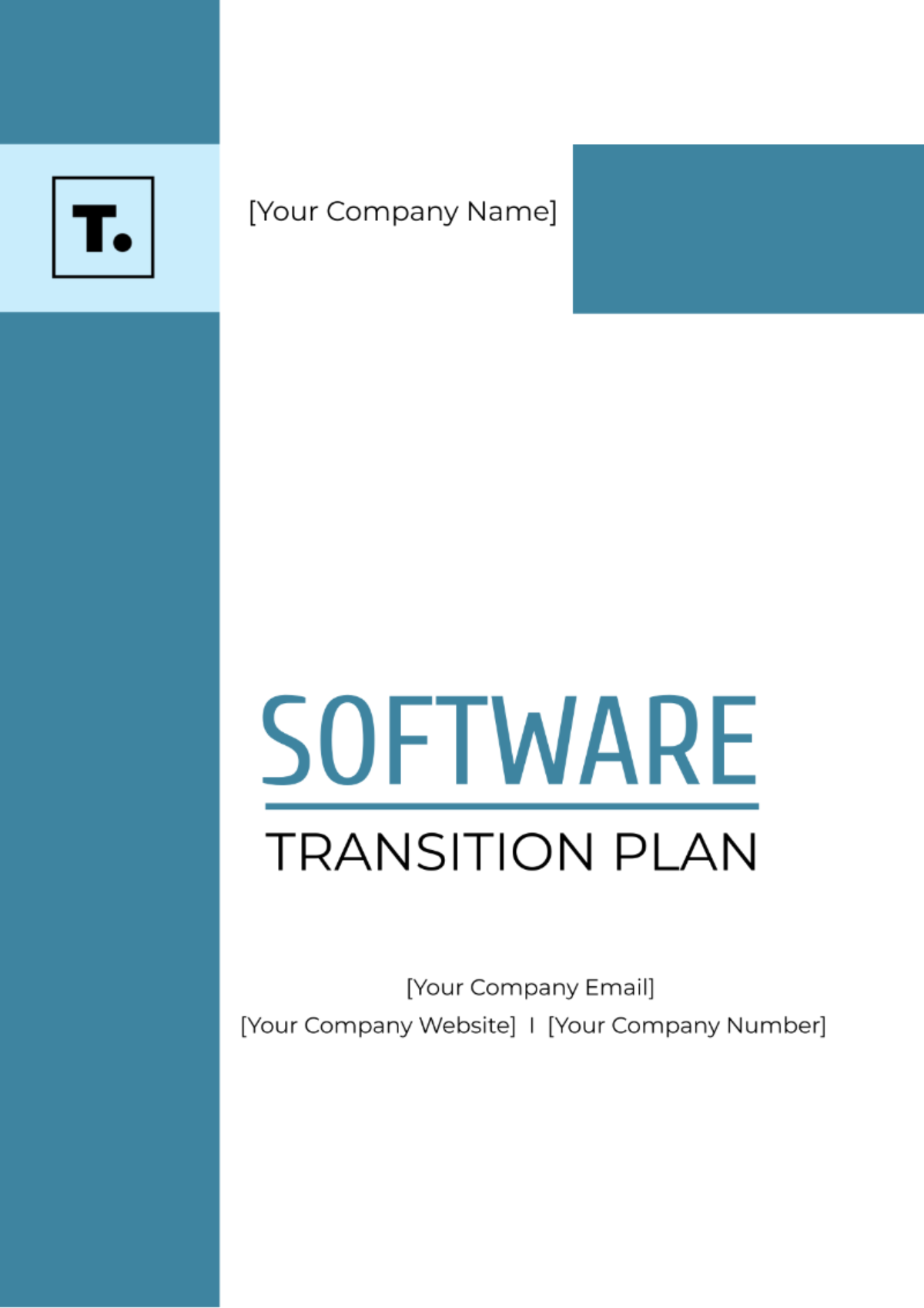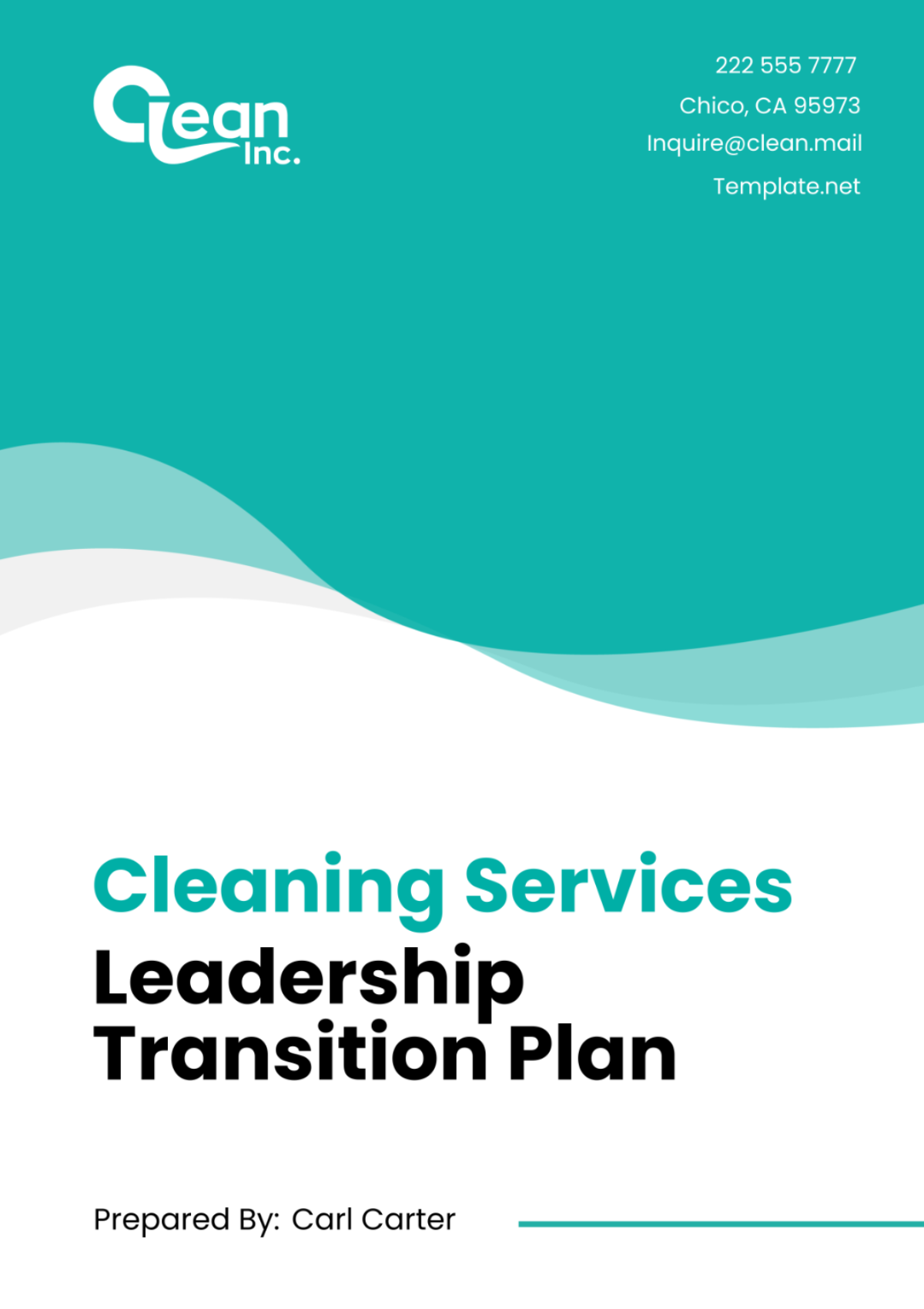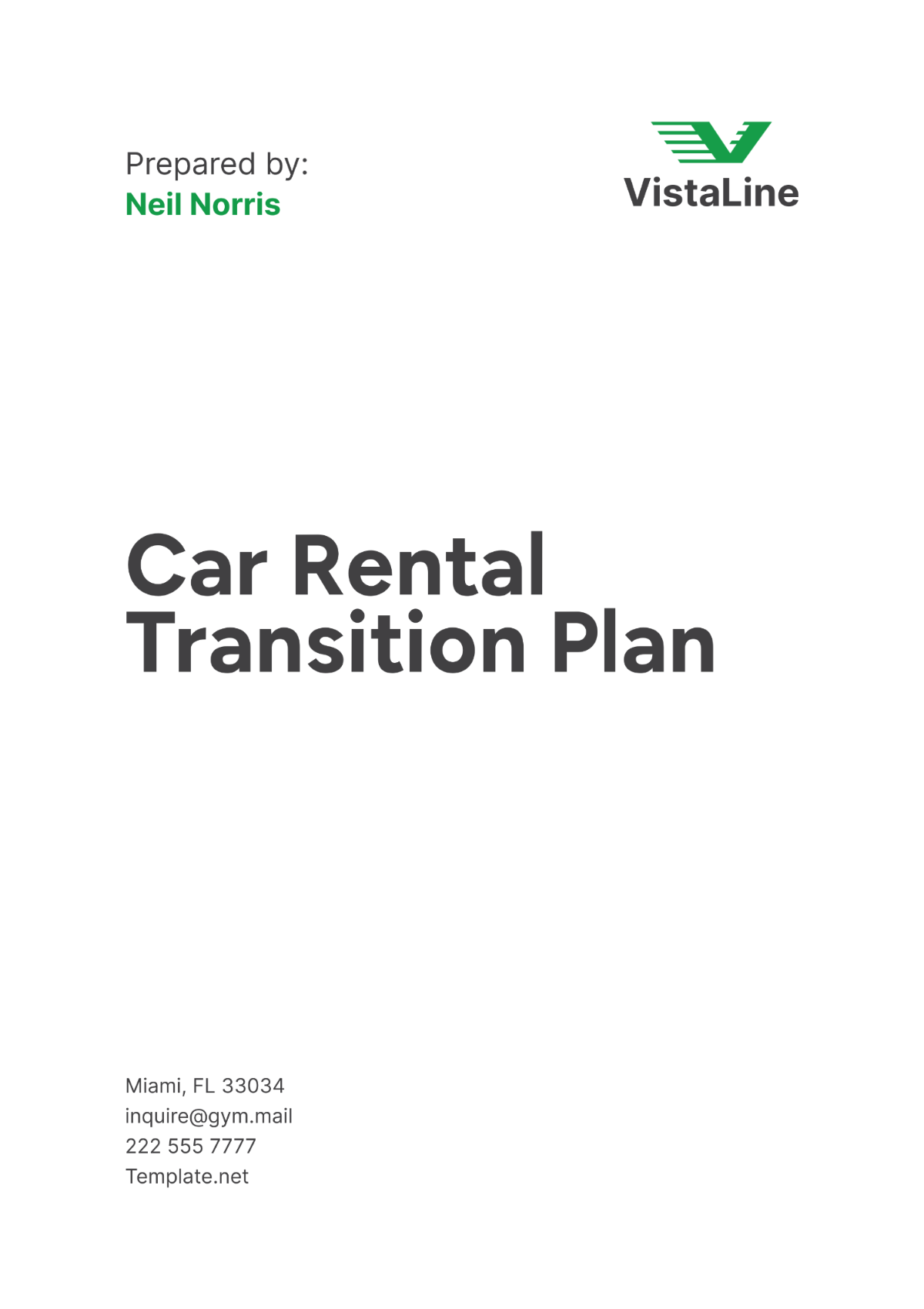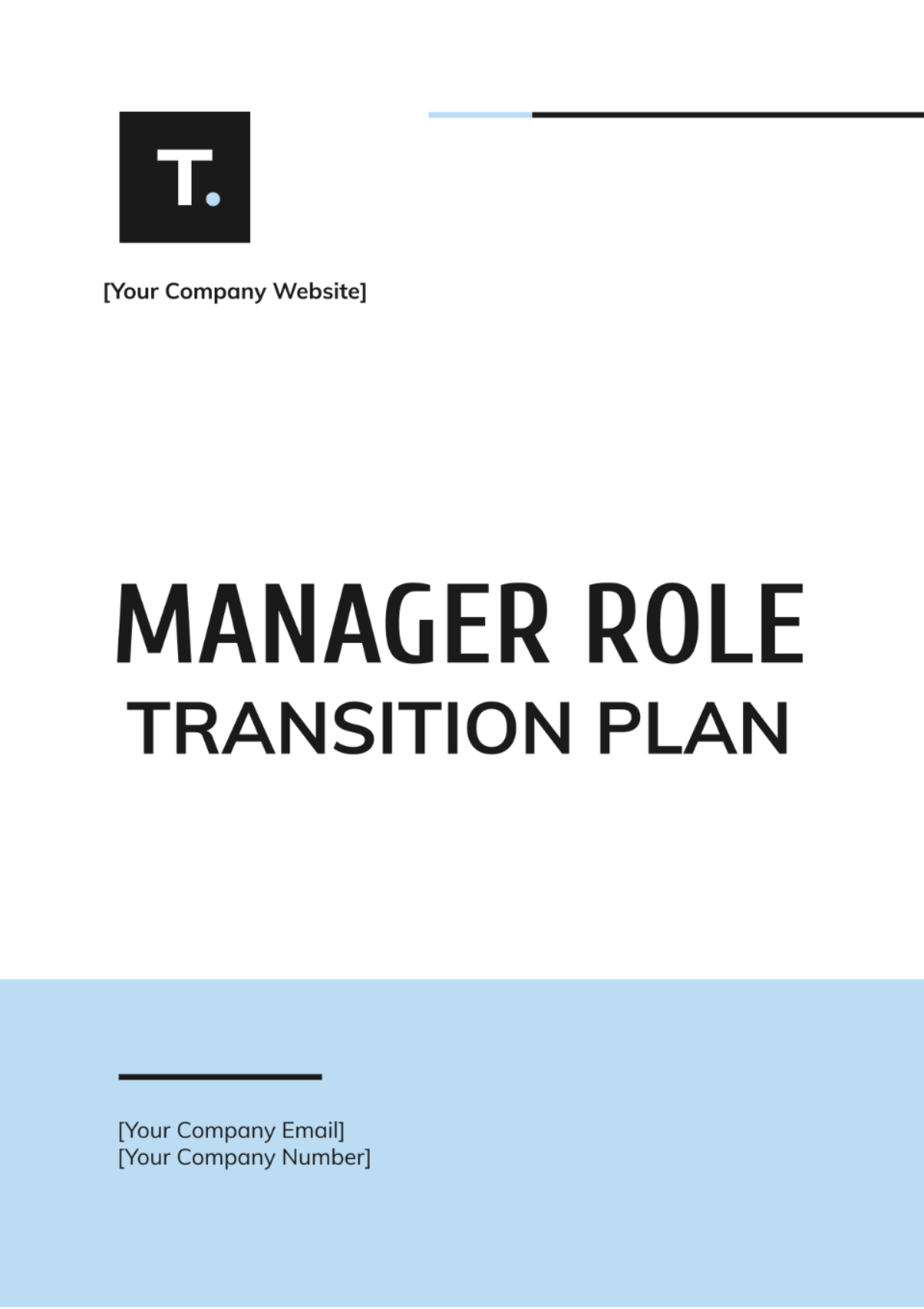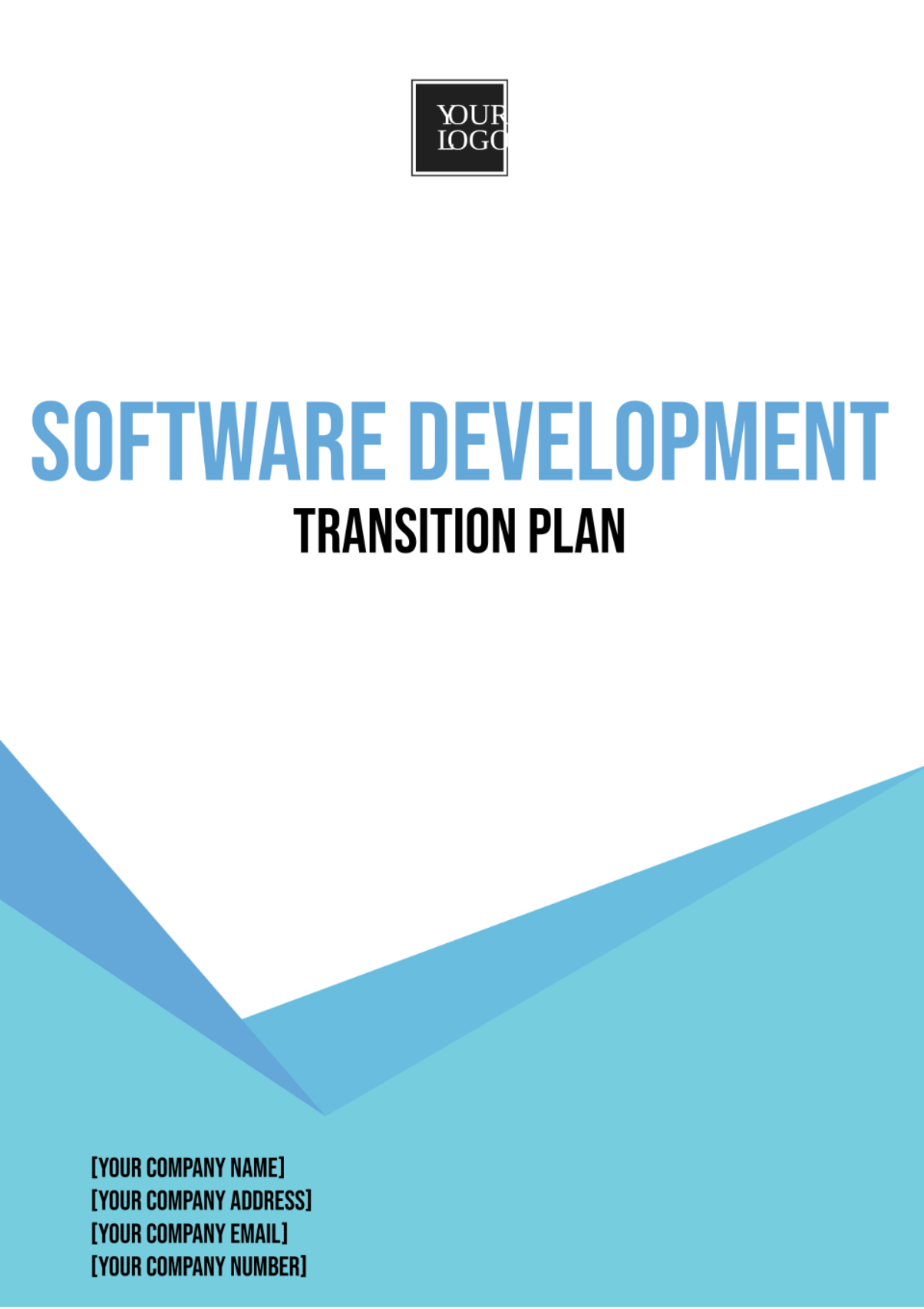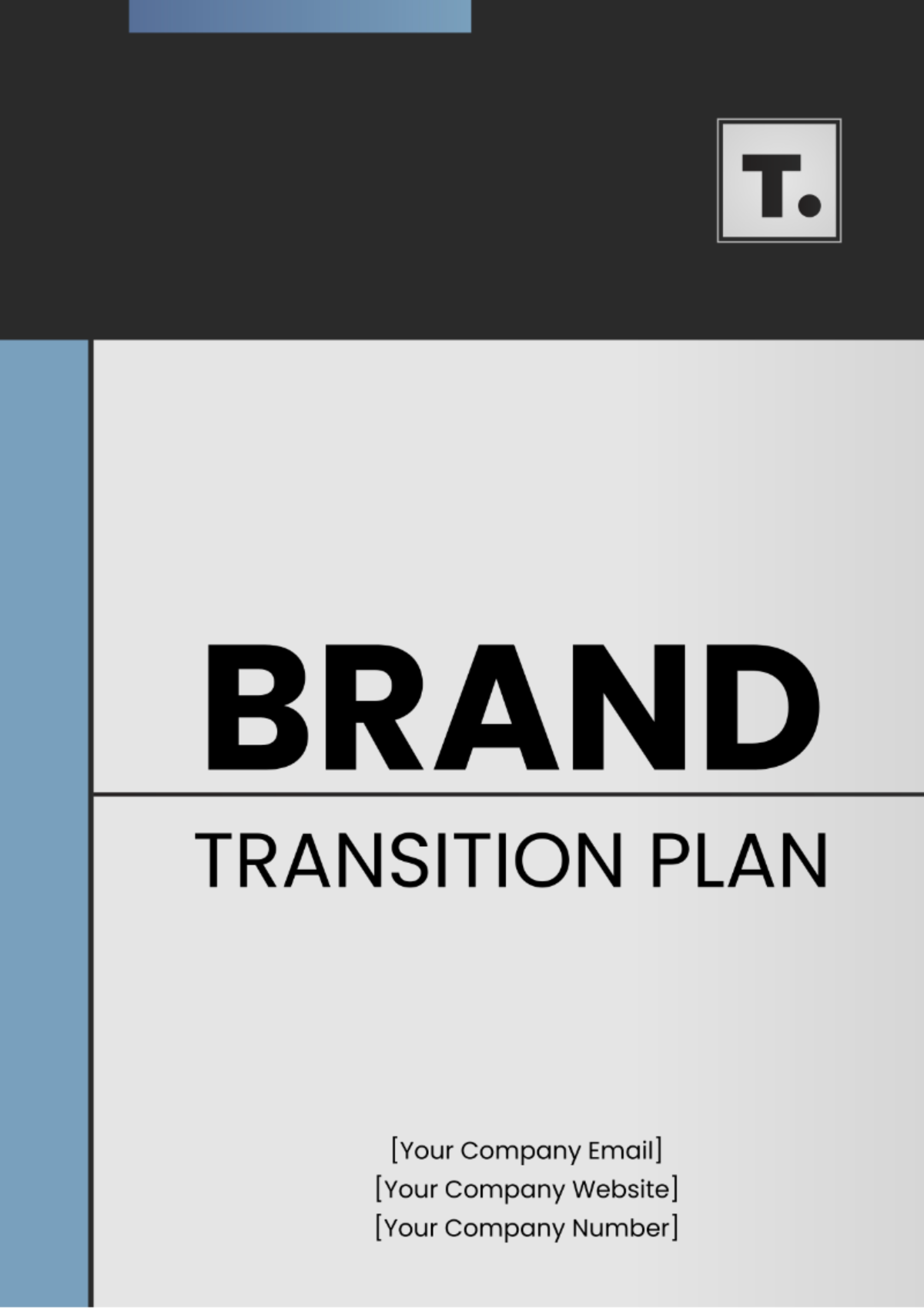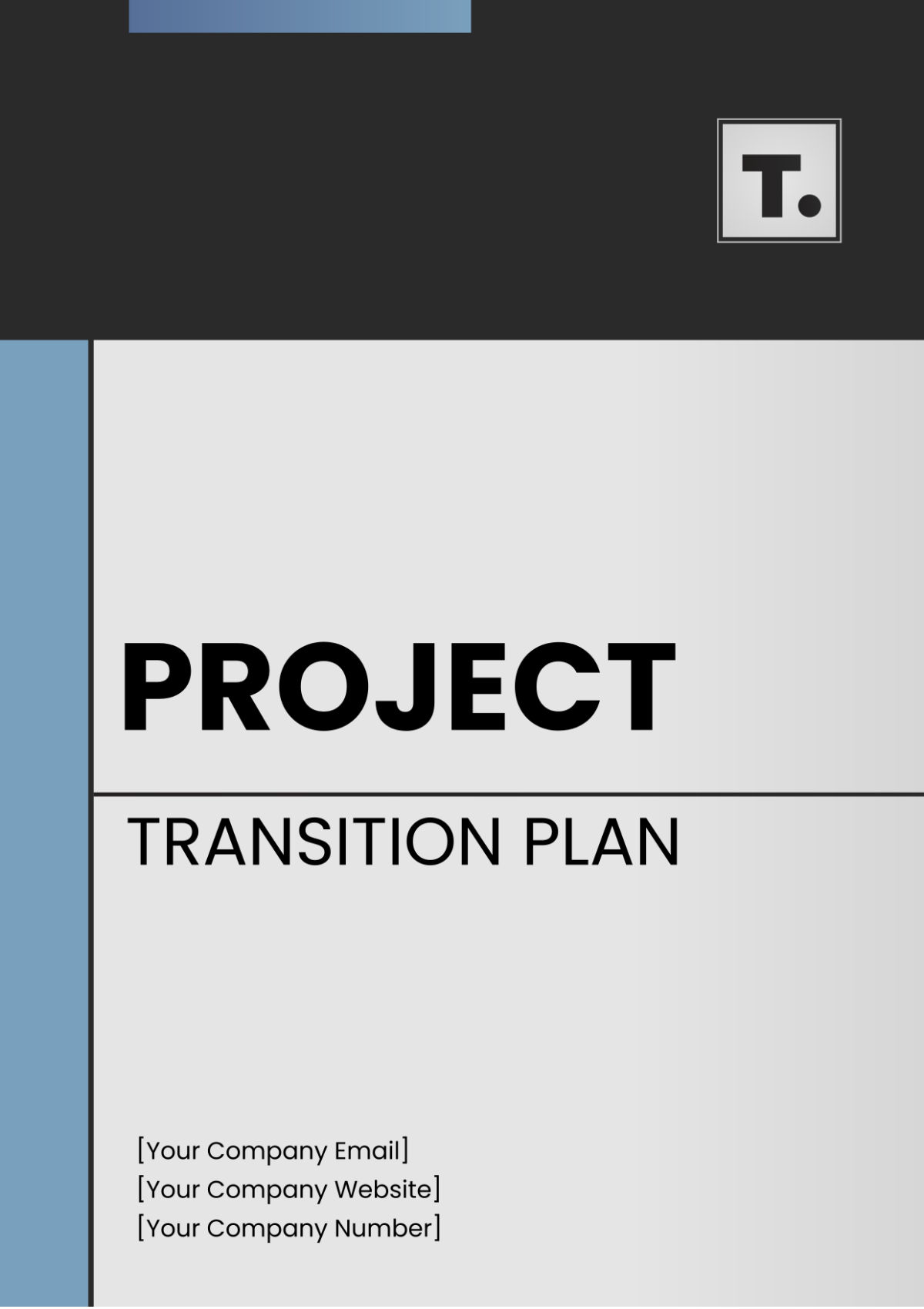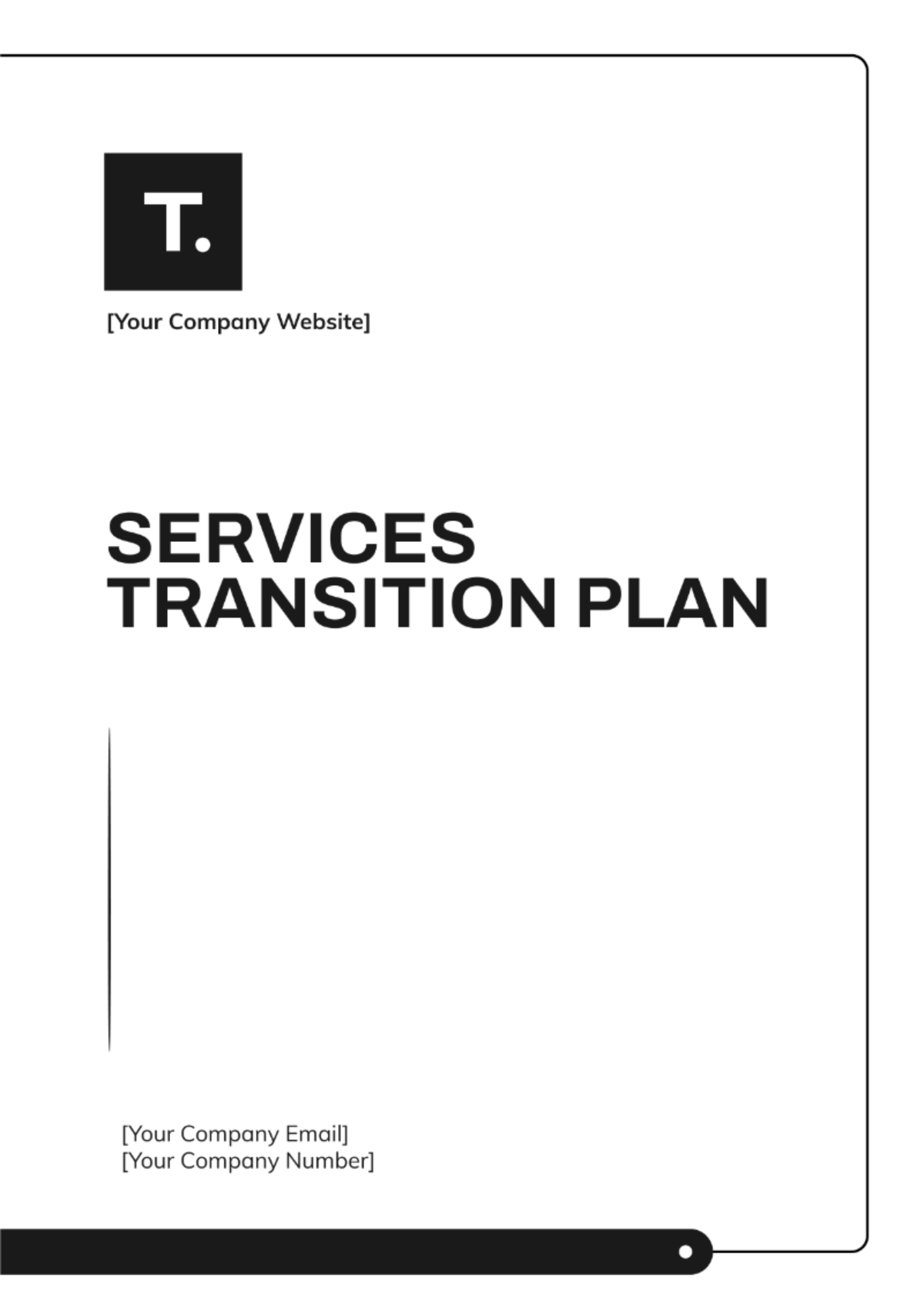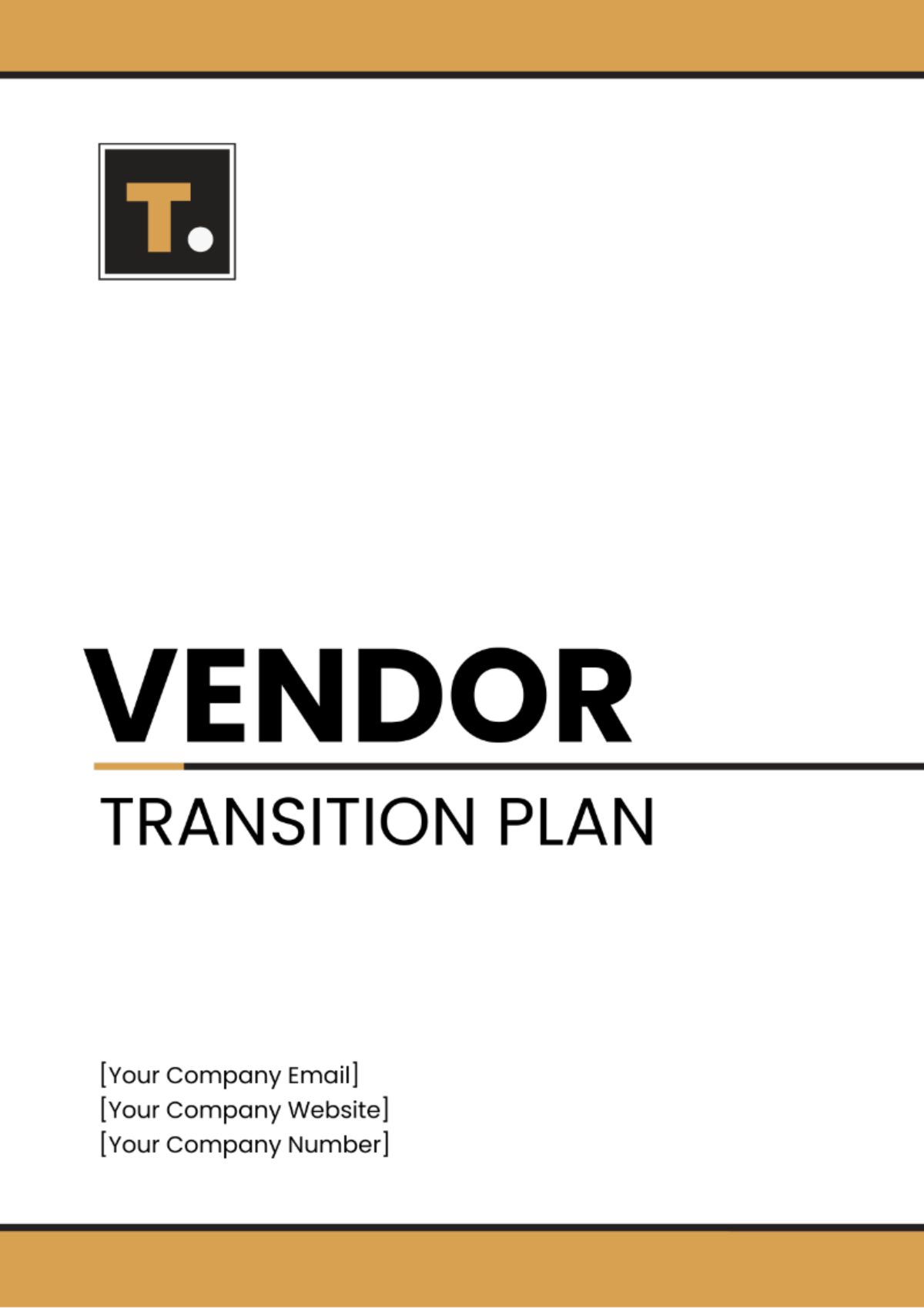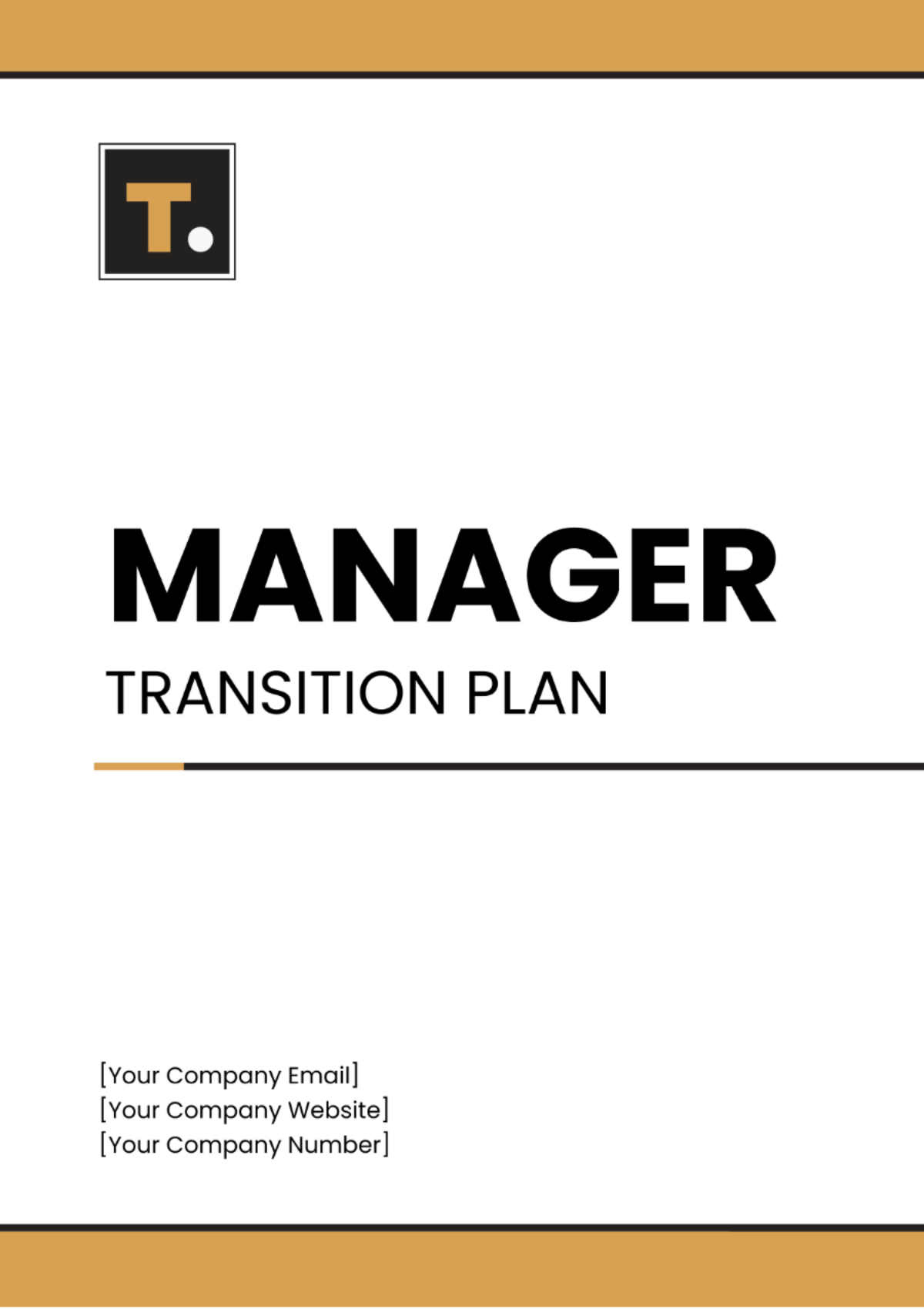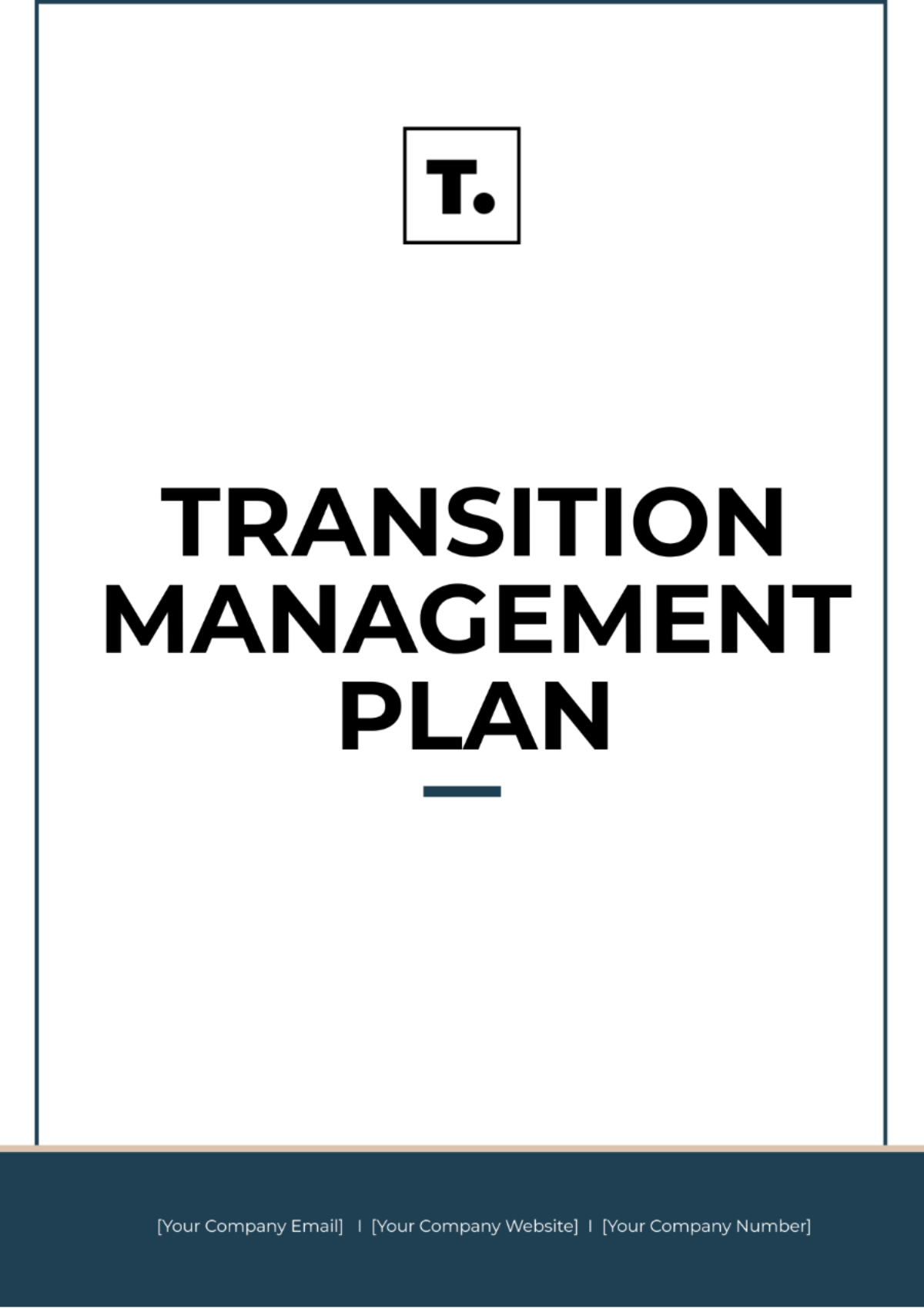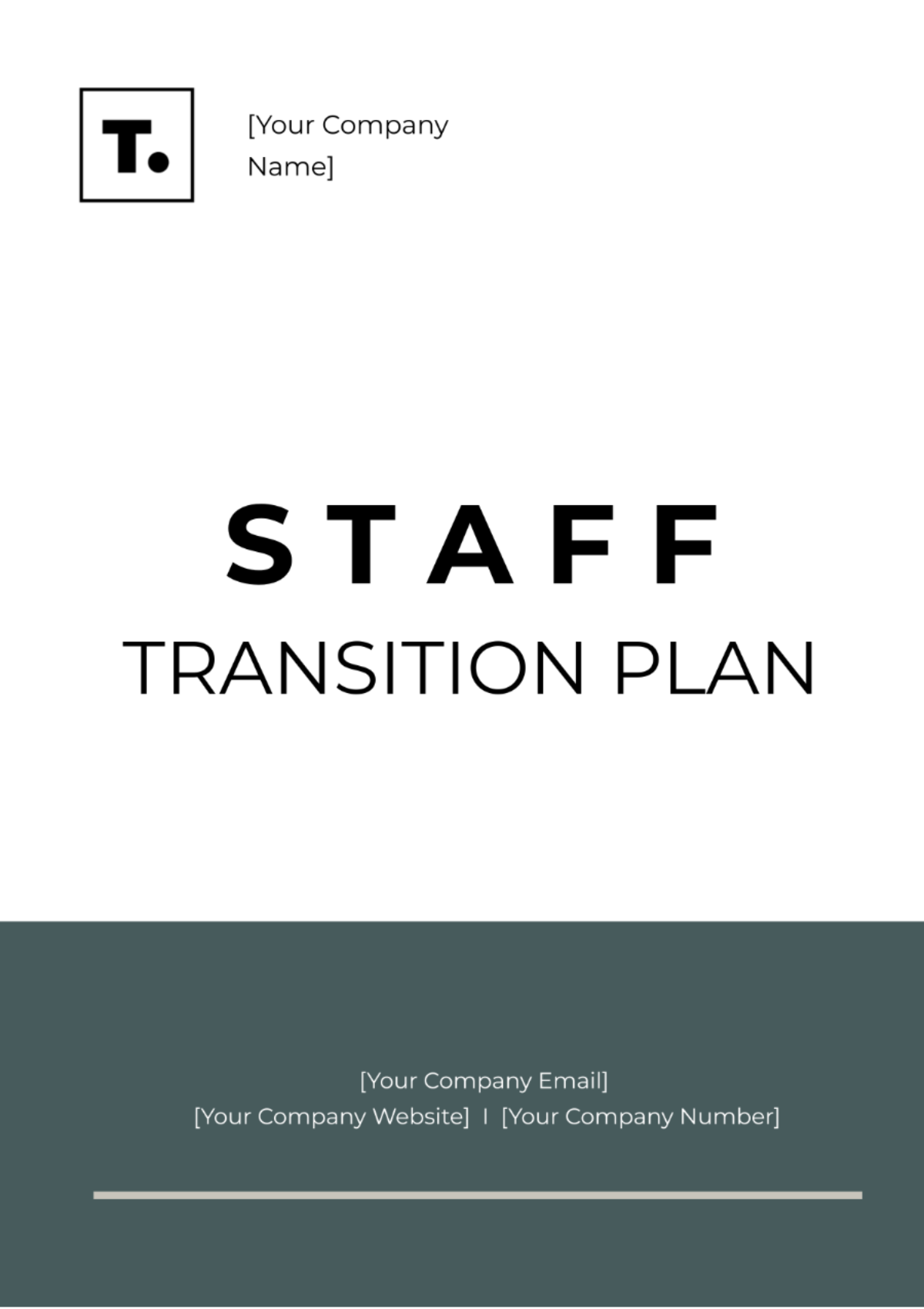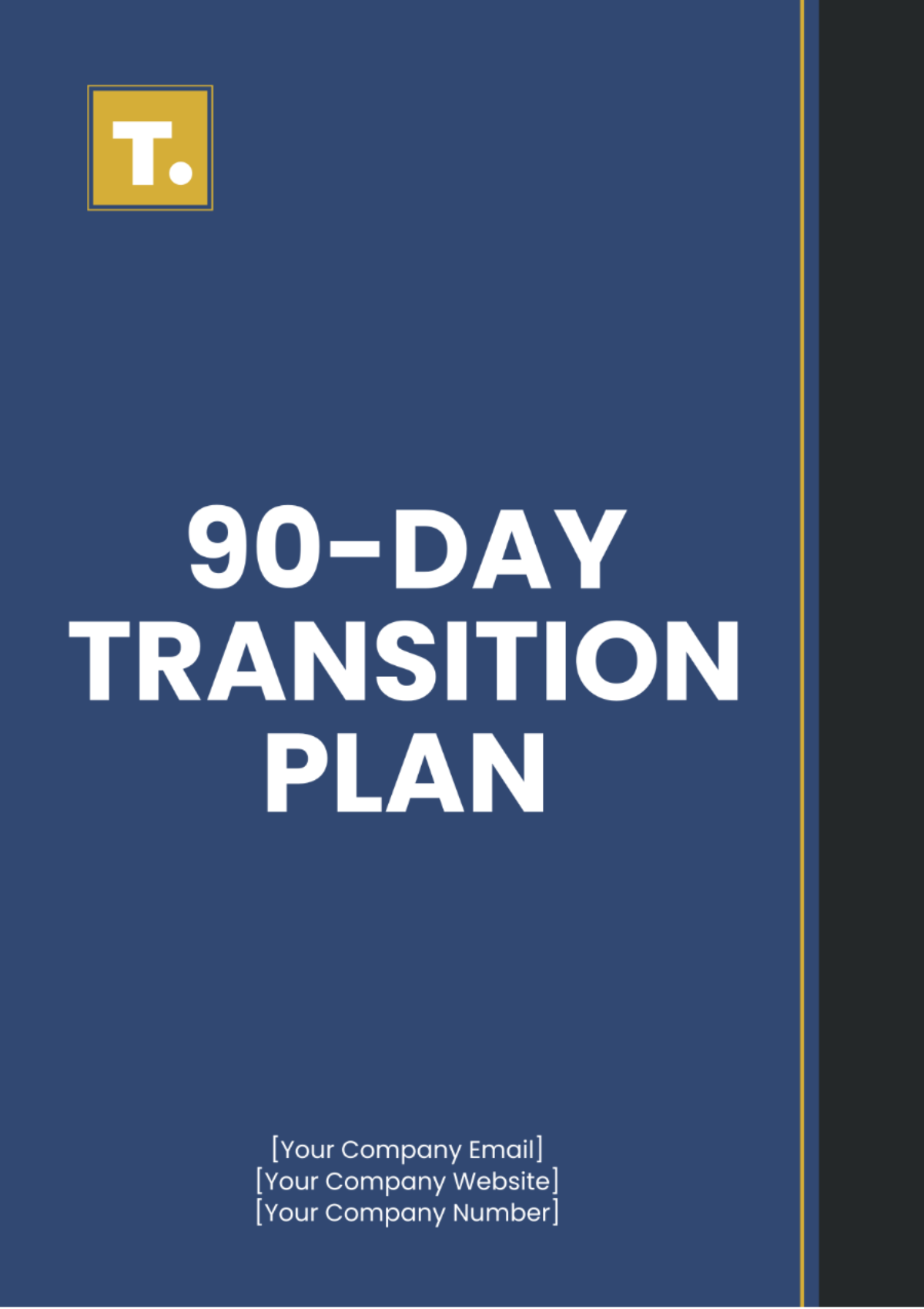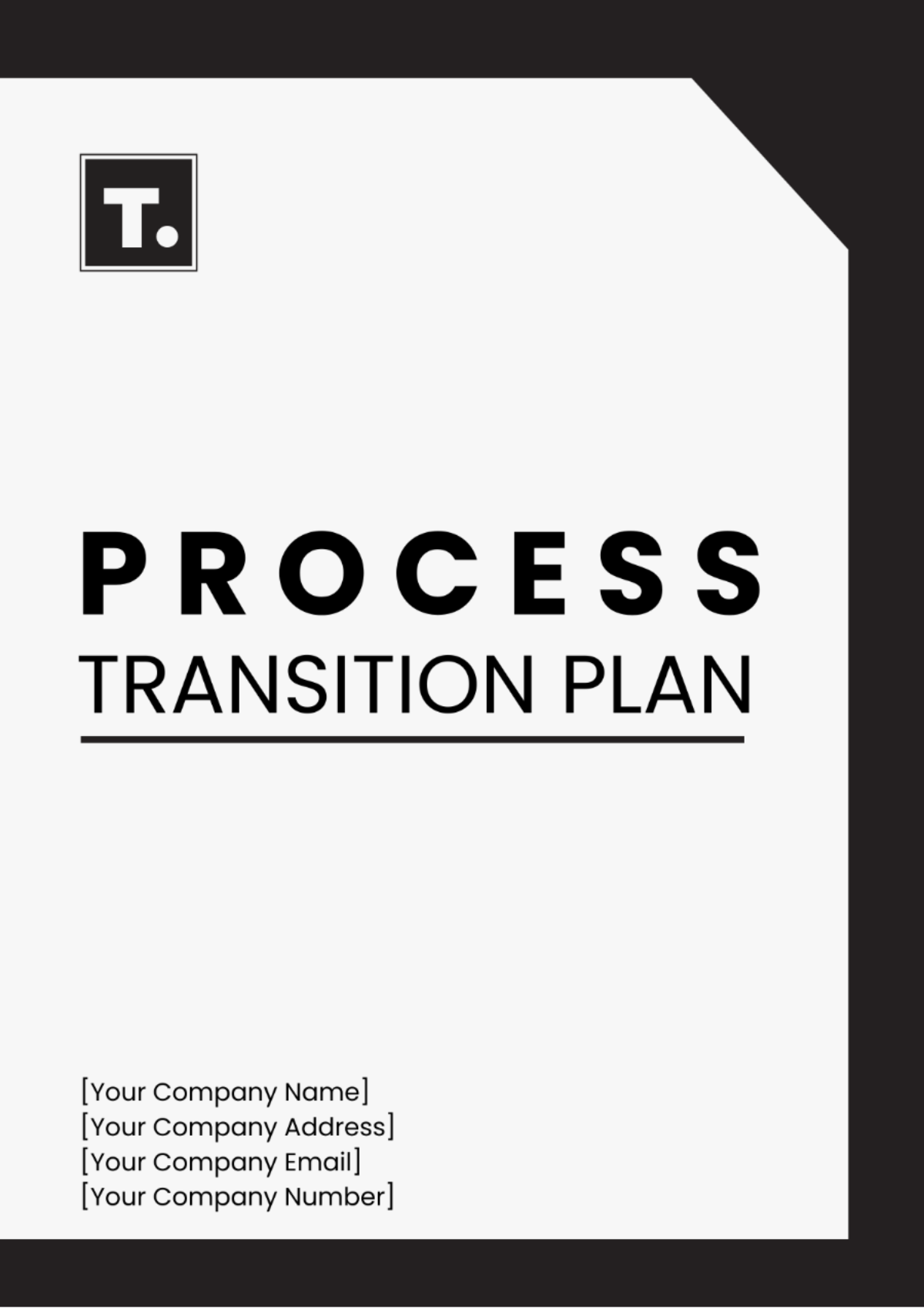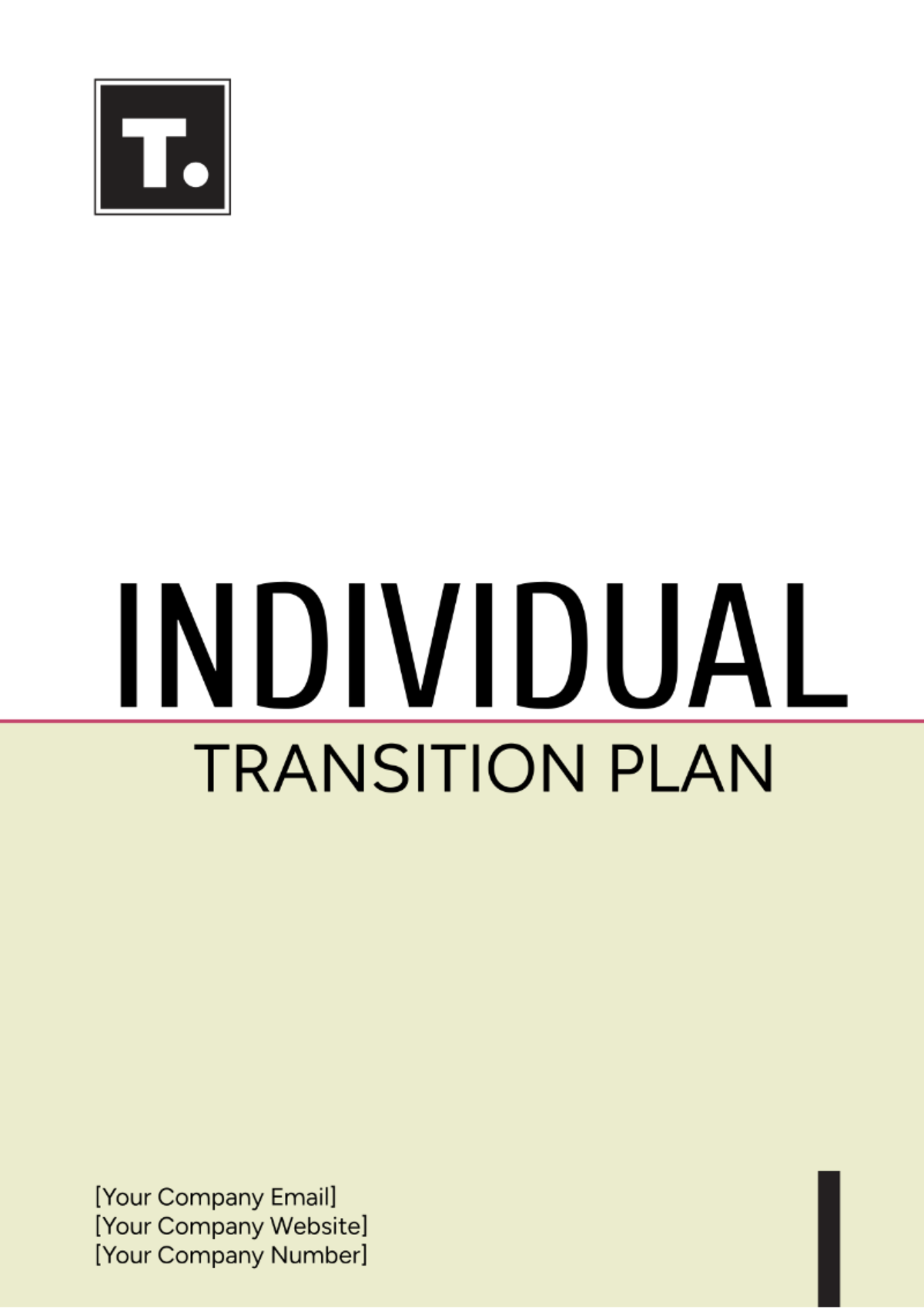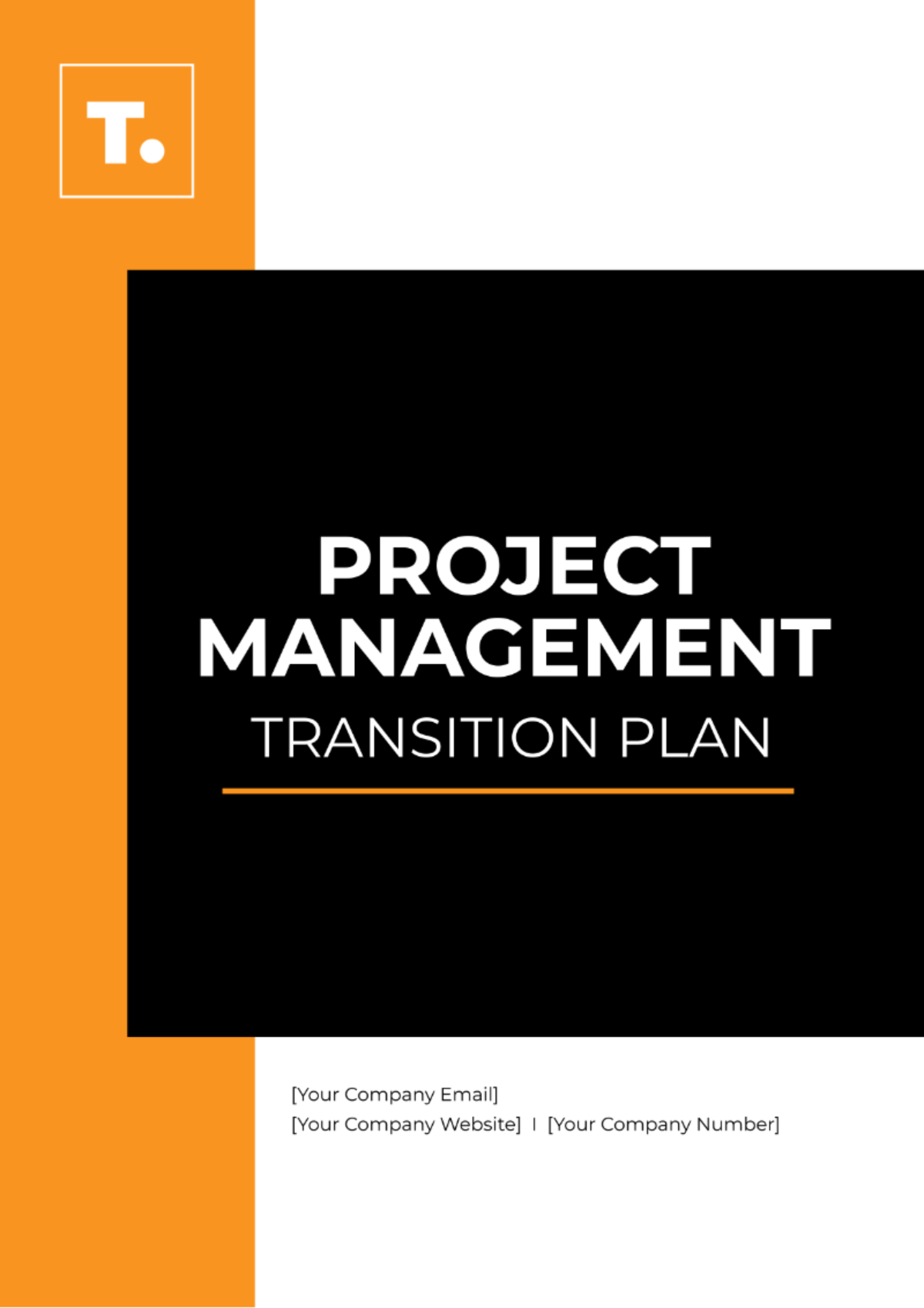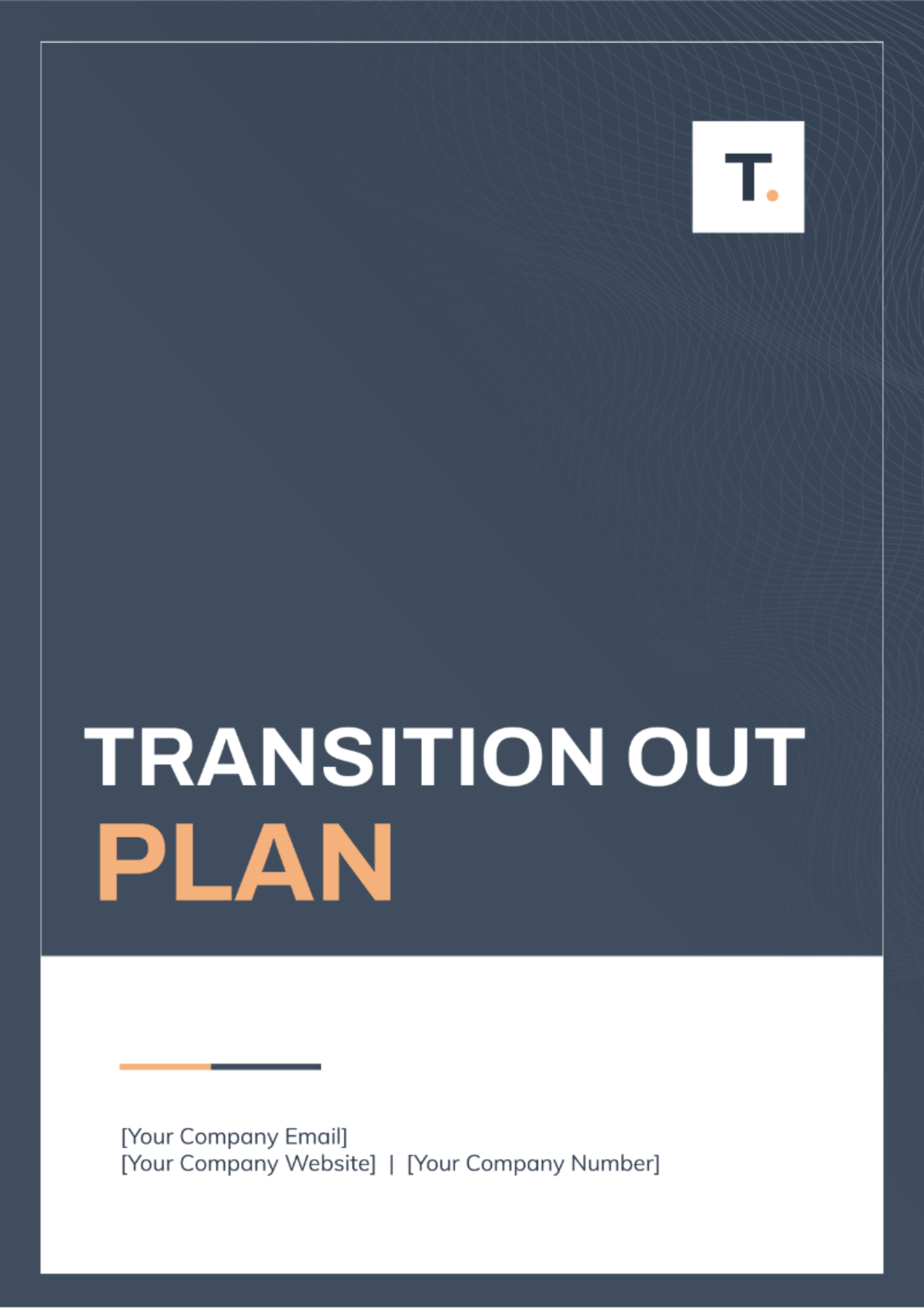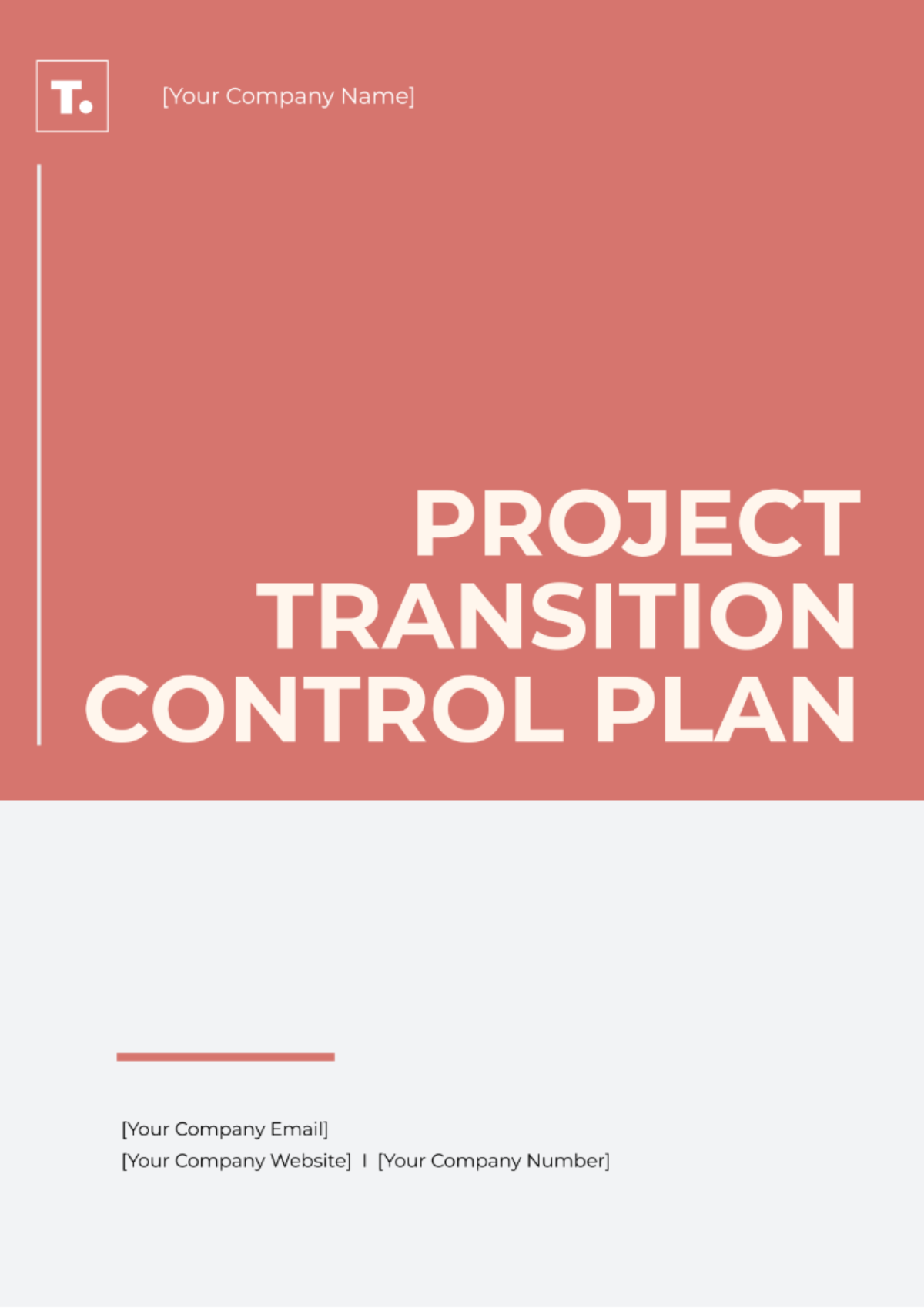Hotel Transition Plan
I. Introduction
A. Purpose of the Transition Plan
The purpose of this Transition Plan is to provide a comprehensive framework for the seamless transition of [Your Company Name] to new management or ownership. This document outlines the necessary steps and strategies to ensure that all operational, financial, and administrative aspects are adequately addressed, minimizing disruption to guests, employees, and stakeholders. The Transition Plan aims to maintain the high standards of service that [Your Company Name] is known for while implementing changes efficiently and effectively.
B. Scope and Objectives
The scope of this Transition Plan encompasses all areas of the hotel’s operations, including front-of-house services, back-of-house processes, technology systems, marketing efforts, and financial management. The objectives of the plan are to:
Ensure a smooth and efficient transition with minimal impact on guests and employees.
Maintain operational continuity and uphold service quality standards.
Integrate new management practices and systems effectively.
Achieve financial stability and continued growth post-transition.
Enhance stakeholder communication and satisfaction.
C. Overview of the Transition
The transition at [Your Company Name] involves a change in management and possibly ownership. This process includes assessing current operations, implementing strategic changes, and integrating new systems and procedures. The transition is planned to take place over a period of six months, divided into distinct phases to systematically address various aspects of the hotel’s operations.
II. Current State Assessment
A. Review of Existing Operations
An in-depth review of existing operations at [Your Company Name] is crucial for understanding the current state of affairs. This includes evaluating the efficiency of front desk operations, housekeeping, food and beverage services, maintenance, and administrative functions. The review will identify strengths to be preserved and areas requiring improvement.
B. SWOT Analysis (Strengths, Weaknesses, Opportunities, Threats)
Conducting a SWOT analysis provides a clear picture of the hotel's current position.
Strengths: High guest satisfaction rates, strategic location, strong brand reputation, skilled staff, and robust financial performance.
Weaknesses: Outdated technology systems, high operational costs, limited marketing reach, and occasional staff turnover.
Opportunities: Expansion of services, introduction of new technologies, market trends favoring boutique hotels, and potential partnerships with local businesses.
Threats: Increased competition, economic downturns, changing guest preferences, and regulatory changes.
C. Stakeholder Identification and Analysis
Identifying and analyzing stakeholders is essential for effective communication and engagement during the transition. Key stakeholders include:
Guests: Ensuring minimal disruption to their experience.
Employees: Providing job security and clarity on changes.
Management: Ensuring smooth handover and operational continuity.
Suppliers: Maintaining steady supply chains and relationships.
Investors: Assuring continued financial performance and growth.
Local Community: Preserving positive relationships and contributions.
III. Transition Strategy
A. Key Transition Goals and Milestones
The transition strategy involves setting clear goals and milestones to track progress. Key goals include maintaining guest satisfaction, ensuring employee retention, upgrading technology systems, and achieving financial targets. Milestones are defined as follows:
Month 1 | Complete operational review and SWOT analysis. |
Month 2 | Develop detailed action plans for each department. |
Month 3 | Begin implementation of new systems and processes. |
Month 4 | Conduct staff training and integration workshops. |
Month 5 | Monitor and adjust strategies based on initial feedback. |
Month 6 | Finalize transition and evaluate overall success. |
B. Timeline and Phases of Transition
The transition will occur in three main phases:
Preparation Phase (Month 1-2): Conduct assessments, develop plans, and communicate changes to stakeholders.
Implementation Phase (Month 3-5): Execute changes, provide training, and integrate new systems.
Stabilization Phase (Month 6): Monitor operations, make necessary adjustments, and finalize the transition.
C. Resource Allocation and Budget
Allocating resources effectively is critical for a successful transition. This includes budgeting for staff training, technology upgrades, marketing campaigns, and contingency funds.
Category | Amount |
|---|---|
Staff Training | $50,000 |
Technology Upgrades | $100,000 |
Marketing and Rebranding | $30,000 |
Operational Adjustments | $20,000 |
Contingency Fund | $25,000 |
Total Budget | $225,000 |
IV. Operational Changes
A. Organizational Structure Adjustments
Adjustments to the organizational structure may be necessary to align with new management practices. This could involve redefining roles, streamlining processes, and possibly restructuring departments to enhance efficiency and communication. Ensuring that all staff members are aware of their new roles and responsibilities is critical for maintaining smooth operations.
B. Staffing and Training Requirements
Staffing and training are crucial components of the transition. Ensuring that current employees are retained and adequately trained on new systems and processes is essential. This involves conducting comprehensive training programs covering customer service, new technologies, and operational procedures. Providing support and clear communication helps in mitigating any resistance to change and ensures a seamless transition.
C. Process and Procedure Updates
Updating processes and procedures to reflect new management practices is vital for maintaining consistency and efficiency. This includes revising standard operating procedures (SOPs), enhancing guest service protocols, and implementing new quality assurance measures. Regular reviews and feedback mechanisms should be established to ensure continuous improvement and adherence to updated procedures.
V. Technology and Systems Integration
A. IT Infrastructure and Software Upgrades
Upgrading the hotel’s IT infrastructure and software systems is essential for enhancing operational efficiency and guest experience. This involves implementing new property management systems (PMS), point of sale (POS) systems, and customer relationship management (CRM) software. Ensuring that all systems are integrated and compatible will streamline operations and improve data management.
B. Data Migration and Management
Migrating data from old systems to new platforms requires careful planning and execution to prevent data loss or corruption. This includes transferring guest records, financial data, inventory information, and other critical data. Establishing robust data management practices ensures data integrity and security throughout the transition process.
C. System Testing and Implementation
Thorough testing of new systems is crucial before full implementation. This involves conducting pilot tests, identifying any issues, and making necessary adjustments. Ensuring that all staff are proficient in using the new systems through training and support is essential for a successful transition. Regular monitoring and troubleshooting will help in addressing any technical challenges that arise during the initial phase of implementation.
VI. Facility Management
A. Maintenance and Renovation Plans
[Your Company Name] understands the importance of maintaining high standards in facility management to ensure guest satisfaction and operational efficiency. As part of the transition, a detailed maintenance and renovation plan has been developed to address both immediate and long-term needs. The maintenance plan includes routine inspections, preventive maintenance schedules, and rapid response protocols for emergencies.
Maintenance Schedule Table
Area | Frequency | Responsible Team |
|---|---|---|
HVAC Systems | Monthly | Engineering |
Elevators | Quarterly | External Contractor |
Plumbing | Bi-monthly | Maintenance |
Electrical Systems | Monthly | Electrical Team |
Guest Rooms | Daily | Housekeeping |
Renovation efforts will focus on upgrading guest rooms, public areas, and back-of-house facilities. Planned renovations include modernizing room interiors, refurbishing the lobby and dining areas, and enhancing the fitness and spa facilities. These upgrades are designed to improve guest experience and align the hotel’s amenities with contemporary standards.
B. Health and Safety Compliance
Ensuring health and safety compliance is a critical aspect of [Your Company Name]'s transition plan. The hotel is committed to adhering to all local, state, and federal regulations, including fire safety, occupational health standards, and food safety protocols. Regular training sessions will be conducted to keep staff updated on safety procedures and protocols. Additionally, a comprehensive health and safety audit will be performed to identify any areas of non-compliance and implement corrective measures.
Health and Safety Compliance Checklist Table
Requirement | Status | Action Needed |
|---|---|---|
Fire Safety Systems | Compliant | Regular inspections and drills |
Food Safety Standards | Needs Improvement | Update kitchen protocols |
Employee Safety Training | Compliant | Ongoing training sessions |
Guest Safety Protocols | Compliant | Review and update emergency plans |
Sanitation and Hygiene Practices | Compliant | Maintain strict cleaning schedules |
C. Sustainability Initiatives
[Your Company Name] is committed to implementing sustainability initiatives to reduce environmental impact and promote eco-friendly practices. The transition plan includes integrating sustainable practices into daily operations, such as reducing energy consumption, minimizing waste, and using eco-friendly products. Specific initiatives include:
Installing energy-efficient lighting and appliances.
Implementing a comprehensive recycling program.
Using biodegradable and eco-friendly cleaning products.
Encouraging guests to participate in towel and linen reuse programs.
Partnering with local suppliers to source sustainable products.
By prioritizing sustainability, [Your Company Name] aims to contribute positively to the environment and enhance its reputation as a responsible and forward-thinking establishment.
VII. Guest Services Transition
A. Communication Plan for Guests
Effective communication with guests is essential during the transition period. [Your Company Name] will implement a comprehensive communication plan to keep guests informed about any changes and ensure a seamless experience. This plan includes:
Pre-Arrival Communication: Sending emails to upcoming guests with information about the transition, highlighting any changes or improvements that may affect their stay.
On-Site Communication: Providing in-room information packets and signage around the hotel to inform guests about ongoing renovations or changes in services.
Post-Stay Follow-Up: Sending follow-up emails to gather feedback and address any concerns or suggestions guests may have regarding their experience during the transition.
B. Service Continuity and Quality Assurance
Maintaining service continuity and quality assurance is a top priority for [Your Company Name] during the transition. To achieve this, the hotel will:
Develop Standard Operating Procedures (SOPs): Update and refine SOPs to ensure consistency in service delivery across all departments.
Conduct Regular Training: Provide comprehensive training sessions for staff to familiarize them with new procedures and service standards.
Implement Quality Control Measures: Establish quality control protocols, including mystery guest programs and regular performance evaluations, to monitor service standards and identify areas for improvement.
C. Handling Guest Feedback and Concerns
Listening to and addressing guest feedback is crucial for maintaining satisfaction during the transition. [Your Company Name] will implement a structured approach to handle guest feedback and concerns:
Feedback Collection: Use multiple channels, such as in-room surveys, online reviews, and direct communication, to gather guest feedback.
Issue Resolution: Establish a dedicated team to promptly address any issues or concerns raised by guests. This team will be trained to handle complaints efficiently and effectively.
Continuous Improvement: Analyze feedback trends to identify recurring issues and implement corrective actions to prevent future occurrences.
VIII. Marketing and Communication
A. Rebranding and Marketing Strategy
As part of the transition, [Your Company Name] will undertake a rebranding initiative to refresh the hotel’s image and attract new clientele. The rebranding strategy includes updating the hotel's logo, redesigning marketing materials, and enhancing the online presence through a revamped website and active social media engagement.
Marketing Campaign Plan Table
Campaign | Objective | Channel | Timeline |
|---|---|---|---|
Rebranding Announcement | Increase brand awareness | Social Media, Email | Month 1 |
Special Promotions | Drive bookings | Website, Email Marketing | Month 2-3 |
Influencer Partnerships | Enhance online presence | Social Media Influencers | Ongoing |
Guest Loyalty Program | Retain existing customers | Direct Mail, In-Room Ads | Month 3-6 |
The marketing strategy will focus on highlighting the hotel’s unique selling points, such as newly renovated facilities, enhanced guest services, and sustainability initiatives. Targeted campaigns will be designed to reach different market segments, including business travelers, families, and leisure guests.
B. Internal Communication Plan
Effective internal communication is vital for a successful transition. [Your Company Name] will implement a robust internal communication plan to ensure all staff members are informed and engaged throughout the transition process. This plan includes:
Regular Staff Meetings: Conducting weekly meetings to update staff on progress, address concerns, and provide a platform for feedback.
Internal Newsletters: Distributing monthly newsletters with updates on the transition, highlighting key achievements, and sharing important announcements.
Staff Portal: Establishing an online portal where employees can access transition-related information, training materials, and company news.
C. External Communication and Public Relations
Maintaining a positive public image is crucial during the transition. [Your Company Name] will engage in proactive public relations efforts to communicate the benefits of the transition to external stakeholders, including guests, partners, and the media.
Public Relations Strategy:
Press Releases: Issuing press releases to announce significant milestones, such as the completion of renovations or the introduction of new services.
Media Engagement: Organizing press tours and inviting journalists to experience the newly updated facilities and services firsthand.
Community Engagement: Participating in local events and initiatives to strengthen community ties and promote the hotel’s commitment to sustainability and social responsibility.
IX. Financial Management
A. Budget and Financial Planning
Effective financial management is essential for a smooth transition. [Your Company Name] will develop a detailed budget and financial plan to allocate resources appropriately and ensure financial stability. The budget will cover all aspects of the transition, including staff training, technology upgrades, marketing campaigns, and contingency funds.
Category | Amount |
|---|---|
Staff Training | $50,000 |
Technology Upgrades | $100,000 |
Marketing and Rebranding | $30,000 |
Operational Adjustments | $20,000 |
Contingency Fund | $25,000 |
Total Budget | $225,000 |
B. Cost Management Strategies
To manage costs effectively, [Your Company Name] will implement various cost-saving strategies, including:
Negotiating Supplier Contracts: Negotiating contracts with suppliers to obtain better rates and terms.
Energy Efficiency: Implementing energy-saving measures to reduce utility costs.
Operational Efficiency: Streamlining processes and eliminating redundancies to enhance operational efficiency and reduce expenses.
C. Financial Reporting and Analysis
Regular financial reporting and analysis are critical for monitoring the transition’s financial impact. [Your Company Name] will establish a reporting schedule to track financial performance, identify variances, and make informed decisions.
Report | Frequency | Responsible Team |
|---|---|---|
Profit and Loss Statement | Monthly | Finance Department |
Cash Flow Statement | Bi-monthly | Finance Department |
Budget vs. Actuals | Quarterly | Finance Department |
Expense Analysis | Monthly | Finance Department |
X. Risk Management
A. Risk Assessment and Mitigation Plans
Identifying and mitigating risks is crucial for a successful transition. [Your Company Name] will conduct a comprehensive risk assessment to identify potential risks and develop mitigation plans.
Risk | Likelihood | Impact | Mitigation Plan |
|---|---|---|---|
Staff Resistance to Change | High | Moderate | Conduct training and provide clear communication |
IT System Failures | Medium | High | Implement robust testing and have backup systems |
Budget Overruns | Medium | High | Monitor expenses closely and maintain a contingency fund |
Guest Dissatisfaction | Low | Moderate | Maintain high service standards and address feedback promptly |
B. Contingency Planning
Developing contingency plans is essential to address unexpected challenges. [Your Company Name] will create detailed contingency plans for various scenarios, such as natural disasters, IT failures, and supply chain disruptions. These plans will outline specific actions to be taken and resources allocated to manage the situation effectively.
C. Monitoring and Evaluation
Continuous monitoring and evaluation are vital for identifying potential issues early and making necessary adjustments. [Your Company Name] will establish a dedicated team to monitor the transition process, gather feedback, and evaluate progress. Regular progress reports will be generated to keep all stakeholders informed and ensure that the transition stays on track.
XI. Stakeholder Engagement
A. Employee Involvement and Communication
Engaging employees in the transition process is crucial for ensuring their commitment and reducing resistance to change. [Your Company Name] will implement strategies to involve employees actively and maintain open lines of communication.
Employee Surveys: Conducting surveys to gather employee feedback and address any concerns.
Focus Groups: Organizing focus groups to involve employees in decision-making processes.
Recognition Programs: Implementing recognition programs to reward employees who contribute positively to the transition.
B. Guest Communication and Satisfaction
Maintaining guest satisfaction during the transition is a top priority. [Your Company Name] will use various communication channels to keep guests informed and ensure their needs are met.
Regular Updates: Providing guests with regular updates on the transition and any changes that may affect their stay.
Personalized Service: Offering personalized service to address specific guest preferences and concerns.
Feedback Mechanisms: Establishing multiple feedback mechanisms, such as surveys and direct communication, to gather guest input and make necessary adjustments.
C. Community and Partner Engagement
Engaging with the local community and partners is essential for maintaining positive relationships and ensuring a successful transition. [Your Company Name] will implement strategies to involve and communicate with these stakeholders.
Community Meetings: Organizing community meetings to inform local residents and businesses about the transition and address any concerns.
Partnership Agreements: Reviewing and updating partnership agreements to align with the new management’s objectives.
Corporate Social Responsibility (CSR) Initiatives: Continuing and enhancing CSR initiatives to demonstrate the hotel’s commitment to the community.
XII. Transition Completion and Handover
A. Final Evaluation and Reporting
Upon completion of the transition, [Your Company Name] will conduct a final evaluation to assess the success of the transition process. This evaluation will involve gathering feedback from all stakeholders, analyzing financial performance, and reviewing operational changes. A comprehensive report will be generated, detailing the outcomes and lessons learned.
B. Handover Process
The handover process will involve transferring responsibilities and knowledge from the transition team to the new management team. This includes:
Documentation: Providing detailed documentation on all changes, processes, and systems implemented during the transition.
Training Sessions: Conduct training sessions for the new management team to ensure they are fully prepared to take over operations.
Support Period: Establishing a support period during which the transition team remains available to assist the new management team with any questions or issues that may arise.
C. Celebration and Recognition
Recognizing the efforts of all stakeholders involved in the transition is important for fostering a positive and collaborative environment. [Your Company Name] will organize a celebration event to acknowledge the hard work and dedication of employees, partners, and other stakeholders. This event will serve as an opportunity to reflect on the achievements and set the stage for future success under the new management.
